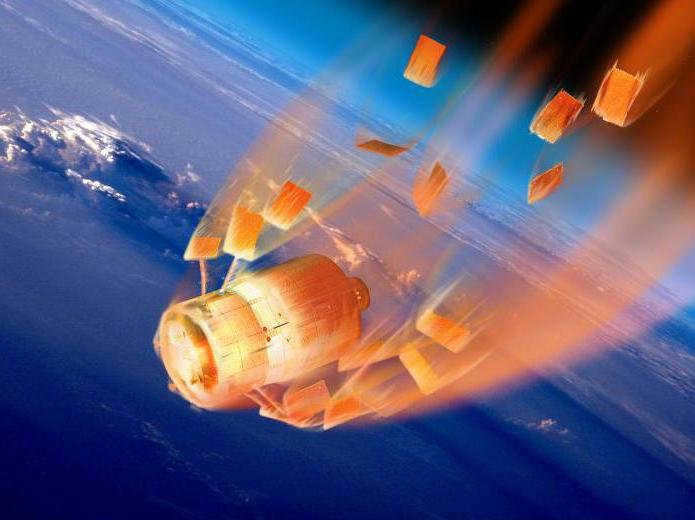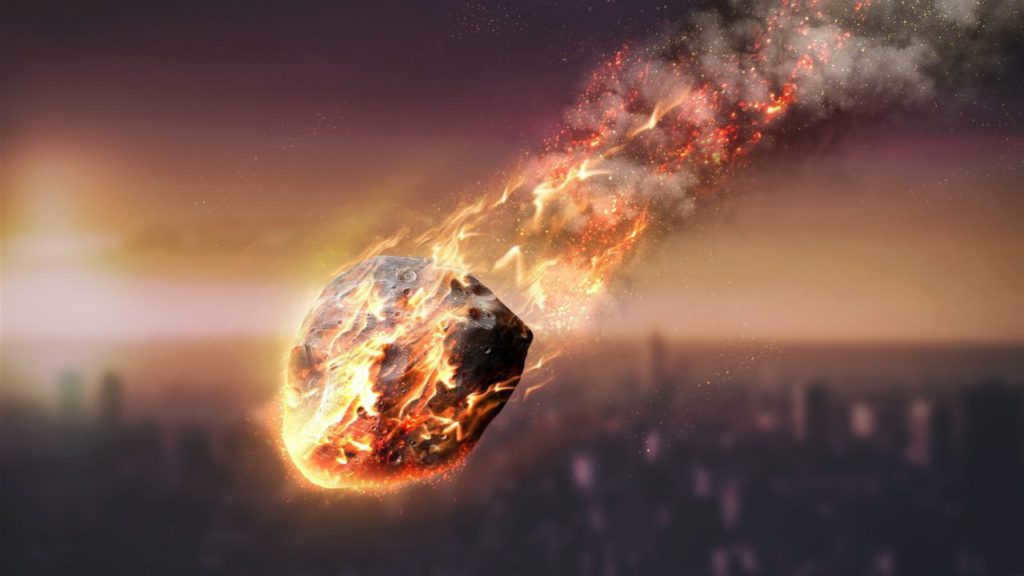
For over a century, the Tunguska meteorite’s fall in Siberia has remained one of the most enigmatic occurrences.
This incident continues to spark a great deal of debate, with numerous theories surrounding the phenomenon. Some hypotheses border on the fantastical. The event remains shrouded in mystery and puzzles that have yet to be solved by humankind.
A concise chronicle of the occurrence
The precise year when the Tunguska meteorite descended upon the Earth is known without a doubt. This incident took place on the 30th of June, 1908. Furthermore, the exact time of the space object’s descent is also documented, occurring at approximately 07:00 local time. Numerous individuals in the present-day Krasnoyarsk region of Russia, specifically in the vicinity of the river known as Podkamennaya Tunguska, were able to witness the sight of this fiery spherical entity. It has been established that the space object traversed a northwestern trajectory. It is estimated that the Tunguska meteorite measured around 30 meters in size.
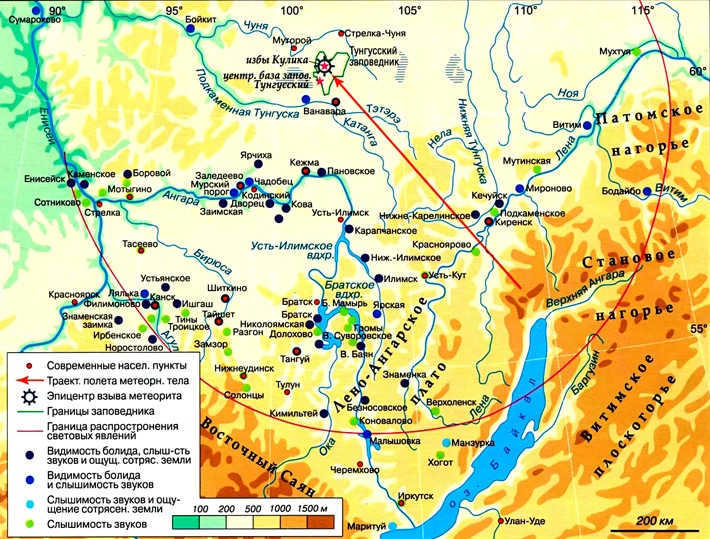

The extraterrestrial object did not make contact with the Earth’s surface. Instead, it detonated at an elevation ranging from 7 to 10 kilometers above the vast taiga region. Fortunately, there were no human settlements directly above the detonation site. The resulting shockwave was so powerful that observatories around the globe were able to detect it. Even the Western Hemisphere became aware of this extraordinary event.
The detonation caused extensive tree falls across a wide expanse of the taiga, covering an area exceeding 2 thousand square kilometers. Many houses suffered damage as a result of the explosion, with shattered glass being a common occurrence. Notably, this was observed in settlements located more than 180 kilometers away from the epicenter of the explosion.

There is only a trace left!
It is worth mentioning that no fragments or remnants of the meteorite were discovered! In 1965, Kovan and Libby, American scientists, postulated that the Tunguska meteorite was composed of antimatter and upon encountering the Earth’s atmospheric matter, annihilation occurred. This means that the matter and antimatter combined and transformed into energy, leaving behind no fragments. Numerous scientists attempted to locate them, but all reached the conclusion that they evaporated during the explosion, while some were propelled thousands of kilometers away, making them impossible to locate at present.
Nevertheless, there exist numerous other meteoroids and fragments that did not undergo combustion in the atmosphere or vaporization during the detonation, thus rendering the aftermath of the Tunguska meteoroid explosion enigmatic and giving rise to conjecture regarding its provenance (theories regarding its origin are expounded upon below).
Appearance of a Meteorite. Example
In ancient times, a massive iron meteorite known as Goba, weighing approximately 66 tons and occupying a volume of 9 m³, descended from the heavens. This extraordinary celestial object was discovered near Grootfontein, Namibia in 1920. It holds the distinction of being the largest meteorite ever unearthed, and remains in pristine condition at its original landing site in the southwestern region of Africa, specifically in Namibia near Goba West Farm. Additionally, it stands as the most substantial naturally occurring iron specimen on our planet.
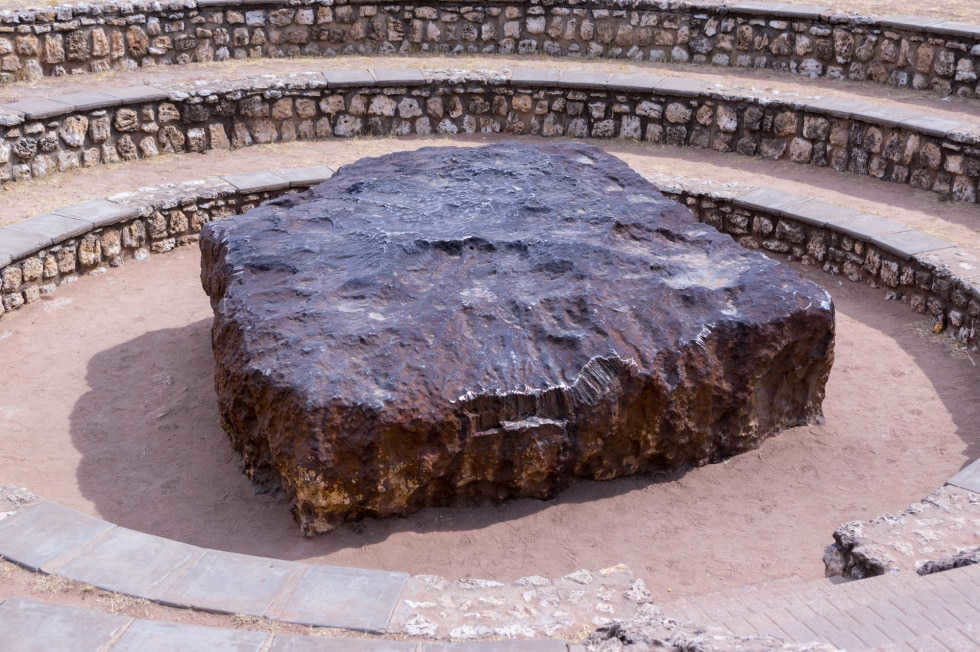
Presumed coordinates for the central point of the Tunguska meteorite blast
Accurately determining the altitude at which the space object exploded has proven to be a challenge for researchers. Various estimations provide a range of 5 to 15 km. The Tunguska meteorite had a diameter of approximately 30 meters. Scientists are in agreement that the explosion of the celestial body was not localized to a single point. As a result, researchers propose different coordinates for the epicenter of the explosion.
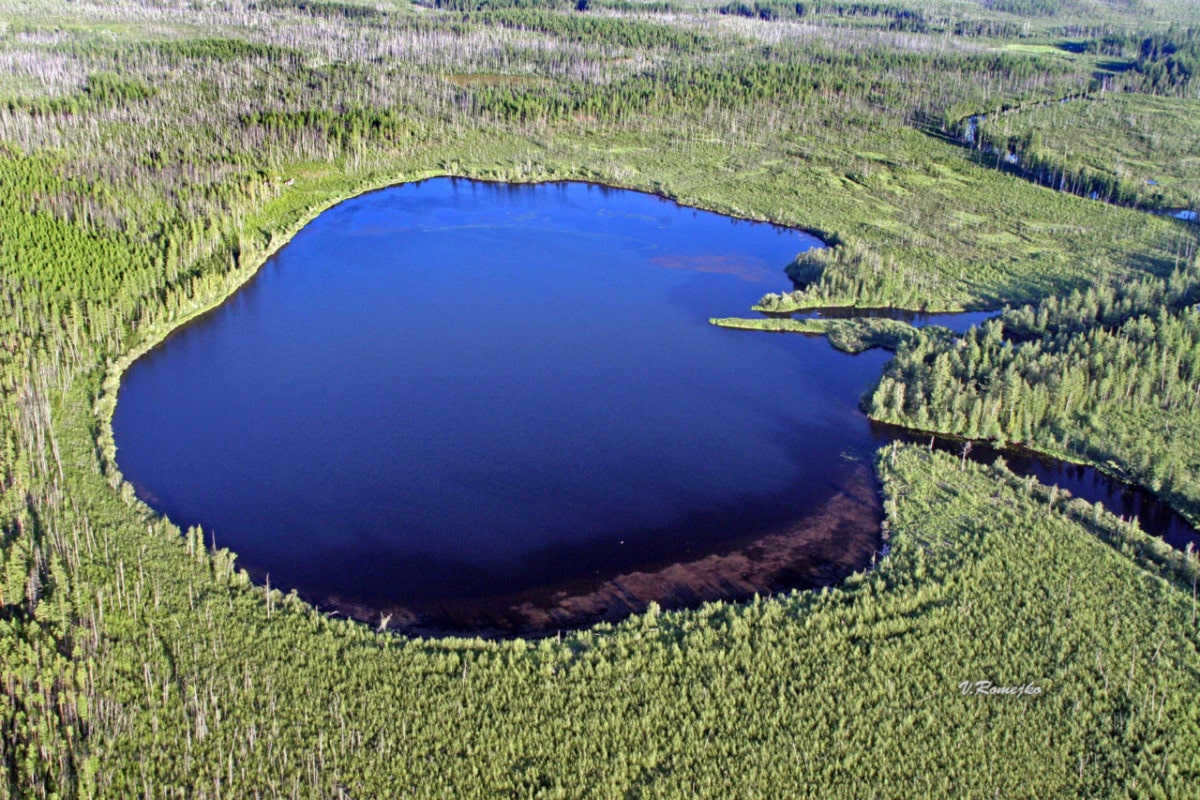
The region where the Tunguska meteorite fell is known as the Podkamennaya Tunguska River area. It is believed that the object exploded near the village of Vanavara, which is currently situated in the Evenki district of Krasnoyarsk Krai. The impact of the celestial body took place approximately 60 km to the north of the aforementioned settlement.
The series of occurrences linked to the collision of the meteorite
This incident was preceded by unusual events witnessed in the atmosphere. In the three days leading up to the meteorite impact, an exceptionally vibrant twilight was observed in Western Siberia, as well as in the European part of the Russian Empire. Atypical for that era were the presence of silver clouds. Additionally, there was an occurrence of a solar halo.
Synopsis: A halo is an optical phenomenon characterized by a luminous circle surrounding a source of light. Halos are most commonly observed around the Sun and Moon, and occasionally around other intense light sources such as street lights.
On the morning of June 30, 1908, a celestial object emerged in the sky above central Siberia. It was moving towards the north. The trajectory of the object was witnessed by numerous residents of nearby towns and villages. The descent of the meteorite was accompanied by thunder-like sounds.
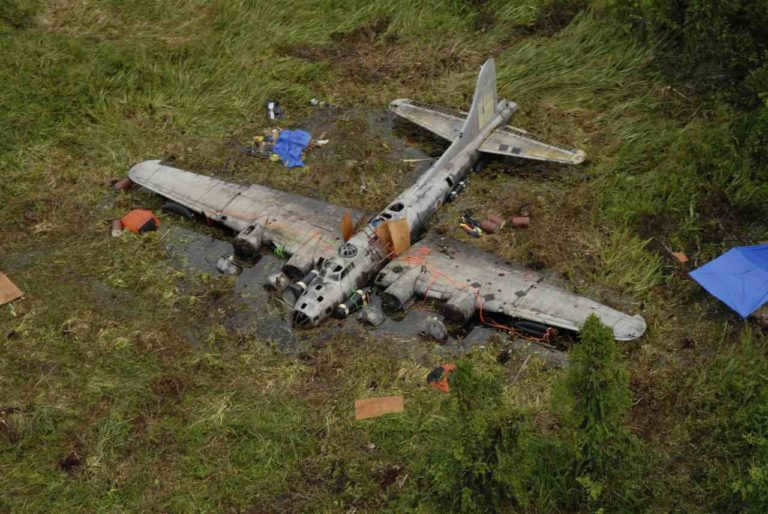

Eyewitnesses have provided an approximate time of the Tunguska meteorite’s descent. It occurred at around 07:14 am local time. During this moment, residents of the region heard a powerful explosion originating near Podkamennaya Tunguska, above the Southern swamp. These details are supported by the Kulik expedition’s research, as documented in the works of V. V. Rubtsov and A.I. Voitsekhovsky.
The magnitude of the explosion that accompanied the Tunguska meteorite’s fall is comparable to that of the Soviet hydrogen bomb tested in 1961. In the former case, the estimated power was approximately 50 megatons, while the latter exceeded 58 megatons.
This event was witnessed by the residents of settlements located within a 100-kilometer radius of its epicenter. The most detailed account of the incident was provided by Evenki brothers named Chekarena and Chuchanchi. Their chum was situated a mere 30 kilometers away from the spot where the Tunguska meteorite landed.
According to the brothers, they were in a clearing near the Avarkitta River when the object descended. Initially, they heard a whistling noise, which was followed by a sudden gust of wind and a loud thunderous sound. The strong wind then toppled their shelter. The brothers also mentioned an earthquake and a fierce forest fire. Lastly, they witnessed a luminous sphere in the sky resembling a second sun, followed by another thunderclap. These accounts are documented in a compilation of articles published in 1967 by I.M. Suslov.
Semen Semenov, a local resident of Vanavara, described the meteorite’s descent as “a blazing inferno that consumed the entire northern sky.” According to the eyewitness, the event was accompanied by a powerful impact, intense shaking, and an earthquake-like sensation. Semenov also recounted the presence of a scorching hot wind that blew during the explosion of the celestial object.
Impact of the Event
The occurrence of the meteorite shower led to a widespread devastation of the forest. More than 2 thousand km2 of land was affected, resulting in the destruction of numerous trees. The explosion caused by the celestial object’s descent was audible to individuals residing up to 850 km away from the epicenter. Additionally, within a 150 km radius, the shockwave caused windows to shatter in certain residential structures.
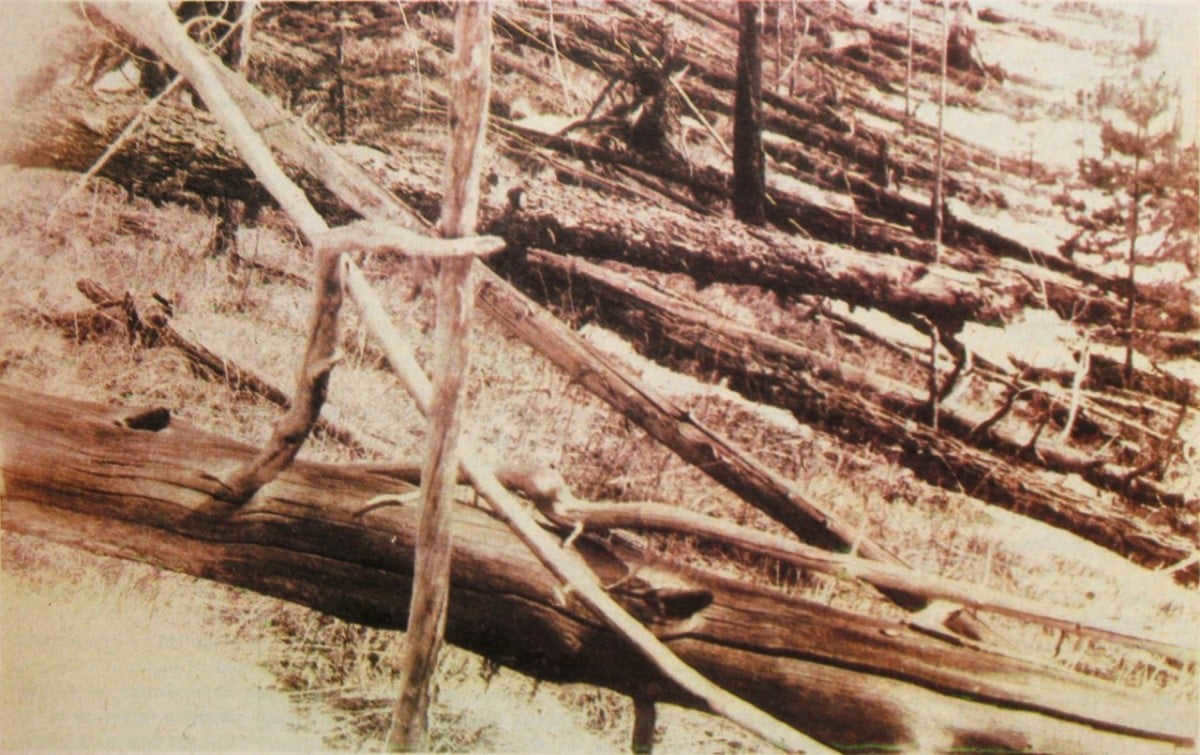
The arrival of the extraterrestrial object caused a seismic wave. This was recorded by monitoring stations not only within the borders of the Russian Empire but also beyond.
In the aftermath of the incident, there were prolonged sightings of unusual atmospheric phenomena in the skies over Russia and Europe. The peak of these occurrences took place on July 1, 1908. Within five hours of the meteorite explosion, a magnetic storm occurred on Earth.
The initial documented accounts of the meteorite impact
As early as June 30, 1908, the publication “Sibirskaya Zhizn” covered this incident. However, the article contained fabricated details regarding the object’s descent. Specifically, the newspaper claimed that the cosmic entity landed close to the railway near Filimonovo Passage. Additionally, the source exaggerated the account by stating that the meteorite forcefully collided with the earth’s surface. Furthermore, the newspaper fabricated the claim that train passengers witnessed the protruding top of the celestial body.
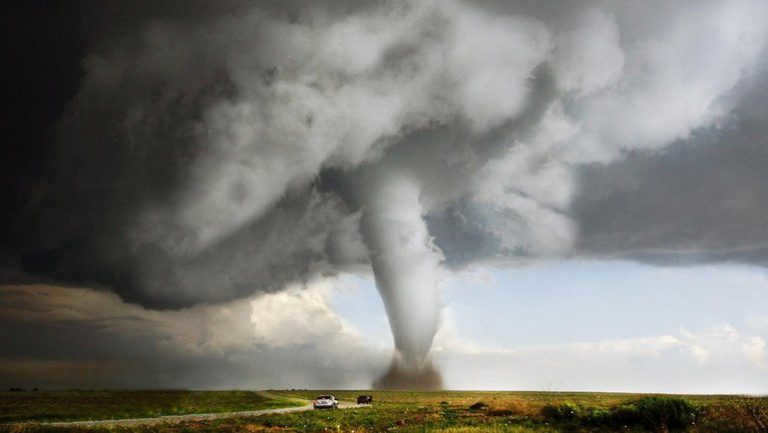
A more plausible account of the event can be found in the July 2, 1908 issue of the newspaper “Siberia”. According to S. Kulesh, a cylindrical luminous object was observed in the sky by peasants living 200 versts from Kirensk. The newspaper stated that the phenomenon occurred on June 17, 1908.
Initially, the Tunguska meteorite did not attract much attention. It wasn’t until the early 1920s that scientific circles began to take interest in this phenomenon. It was during this time that the first expeditions were organized to the location where the object had fallen.
Expedition organized by L.A. Kulik
L.A. Kulik, a Soviet scientist, took the lead in investigating this fascinating occurrence. Kulik embarked on a series of expeditions, ranging from 4 to 6, to the location of the meteorite’s impact in order to unravel its mysteries. The initial expedition occurred in 1927 and uncovered a vast expanse of forest that had been flattened. Subsequent expeditions saw Kulik employing aerial photography techniques to locate the precise spot where the celestial object landed. Additionally, he and his team conducted interviews with individuals who had witnessed the extraordinary event.
In 1941, Kulik had planned a new expedition, but it was canceled due to the outbreak of war. Unfortunately, the scientist passed away while in captivity in 1942. However, the research on this phenomenon was carried on by geologist E.L. Krinov. In his book titled “The Tunguska Meteorite,” Krinov summarized the findings from the extensive work done by L.A. Kulik over the years. Kulik himself always maintained that the object that fell in Siberia was a meteorite and he had been actively searching for the impact crater. At one point, Kulik mistakenly believed that the thermokarst pits discovered by his team were meteorite craters.
Various Explanations for this Phenomenon
Despite extensive research, the peculiarities of the event that took place in 1908 in the sky above Siberia still remain unexplained. No single hypothesis has been universally accepted to unravel the mystery of the Tunguska meteorite.
There are several popular theories:
- Meteorite Impact. This hypothesis suggests that a massive iron meteorite impacted the Earth.
- Comet Impact. Francis Whipple proposed the idea that a comet nucleus collided with Earth. Geochemist Vernadsky believed that the fallen object was a cluster made up of cosmic dust. Some scientists have even suggested a connection between the Tunguska meteorite and the comet Enke.
- The descent of a stone meteorite. This hypothesis was also based on the meteoric origin of the fallen object. However, scientists postulated that the Tunguska meteorite was a rocky asteroid that deflected off dense layers of the atmosphere.
- Incredible. Author Kazantsev proposed that the entity was an extraterrestrial spacecraft that had crashed.
- Volcanic. V. Epifanov and V. Kundt suggested that the event was caused by volcanic activity, resulting in the explosion of a methane cloud.
- Theory of an earthquake triggered by the descent of a fragment from a meteorite. This hypothesis was put forth by S.M. Kuznetsov and A.D. Belkin.
- A small black hole colliding with the Earth.
- The deliberate nuclear explosion in the skies over Siberia. Assumption A.V. Savelyev and N.A. Savelyeva-Novoselova on the anthropogenic nuclear explosion.
- The phenomenon resulting from Nikola Tesla’s experiments. It is believed that the phenomenon occurred as a result of the scientist’s experiments with wireless electricity transmission.
In 2009, experts from NASA proposed that the Tunguska meteorite contained ice. When the object collided with the dense layers of the atmosphere, it released microparticles of ice and water molecules. This phenomenon can explain the presence of silvery clouds in the skies over the United Kingdom and Russia on the day following the celestial body’s impact with Earth. The Russian Academy of Sciences also confirmed this theory back in 1999.


The dimensions and mass of the Tunguska meteorite have been estimated by researchers. It had a diameter of approximately 30 meters and weighed a staggering 5 million tons.
Depiction of the phenomenon in popular culture
The Tunguska meteorite has frequently been featured in the imaginations of science fiction authors. It has been referenced in various works, including:
- “The Astronauts” by Stanislav Lem;
- “The Blazing Island” by Alexander Kazantsev;
- “Monday Begins on Saturday” by the Strugatsky brothers;
- “The Adventures of Alice” by Kir Bulychev;
- “The Secret City” by Vadim Panov.
The Tunguska meteorite has also made appearances in film. In one episode of “The X-Files,” the object’s impact is connected to an extraterrestrial invasion of Earth. Additionally, in the movie “Hellboy: Hero from the Dark,” a character obtains a meteorite stone obelisk for a ritual.
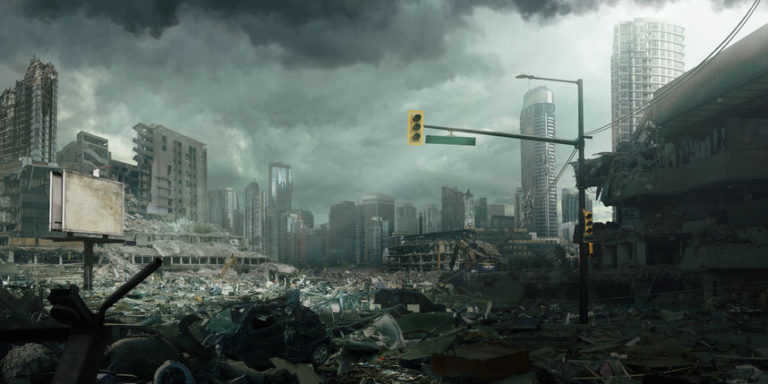
There are several computer games, such as Crysis 2, Syberia II, and Resistance, that make references to the Tunguska meteorite. Additionally, there is a game called “Secret Files: Tunguska” that is dedicated to this phenomenon.
In the media, we frequently hear about large meteorites approaching Earth, and some fortune tellers have even predicted that such events would bring about the “end of the world,” which, fortunately, has not occurred. Recently, there was a report that a massive asteroid would come very close to Earth on March 22 of this year.
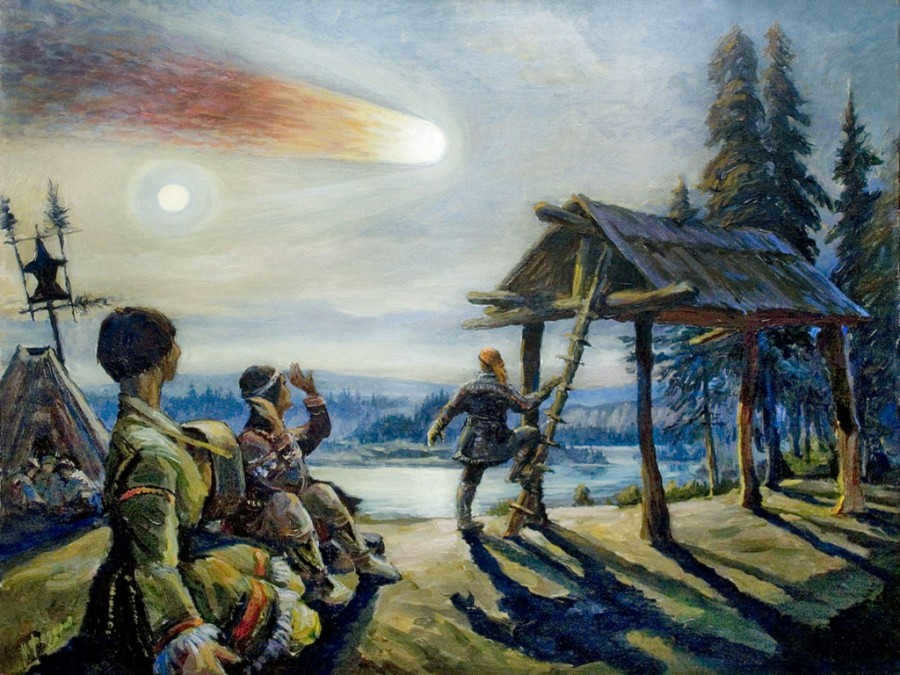
Kulik’s Trail
In our era, if a sighting of a relatively large bolide is observed, with the potential to reach the Earth’s surface, an immediate search is organized to locate the fallen meteorite. Subsequently, discussions and speculation arise about the bolide and the various phenomena it may have caused, but soon fade away.
In 1912, during one of the expeditions in the Urals, the renowned academic V.I. Vernadsky enlisted the help of a local resident, Leonid Alekseevich Kulik, who worked as an assistant forester. Recognizing Kulik’s potential, Vernadsky secured permission for him to study in St. Petersburg. By 1913, Kulik had become a student at St. Petersburg University and joined the staff of the Academy’s mineralogical museum.
One of Kulik’s responsibilities involved registering and organizing data regarding meteorite falls that were submitted to the Academy of Sciences. During that time, the organization was experiencing difficulties and the idea of organizing an expedition to search for meteorites remained a mere dream. This dream would only come true after the revolution, in 1921, when Vernadsky took the initiative to establish a meteorite department within the Academy of Sciences. Kulik accomplished the impossible – he managed to contact Lunacharsky, capture his interest, and convince him of the necessity to allocate funds for organizing an expedition to expand the meteorite collection and verify previously received information. Kulik successfully acquired several million dollars from the People’s Commissariat of Education, which were still substantial at that time, unlike their devaluation in the following years:
I achieved my dream, I am now a millionaire with a plethora of zeros.
Furthermore, in addition to my millions, I possess a unique carriage, state-of-the-art gear, and an abundance of food.
Meanwhile, the expedition’s time and funds were depleted, and the special wagon had to be returned to the People’s Commissariat of Railways. In May 1922, the expedition returned, having covered a distance of twenty thousand kilometers and with a “haul” of a dozen meteorites in the Academy of Sciences’ collection. Additionally, Kulik’s findings were supplemented with information about an unusual earthquake, which had its epicenter in the upper reaches of the Podkamennaya Tunguska and a shallow depth on the surface. This was followed by the arrival of air waves recorded on the barograph tape. Subsequently, scientists also heard reports of an unprecedented explosion that rocked the Evenks in the same area, causing a massive forest collapse spanning an area of 700 square kilometers.
A new expedition could not be organized due to lack of funds and a lack of seriousness on the part of the officials. However, in February 1926, it finally took place, albeit with only two participants – Kulik and his assistant Alexander Emilievich Gulikh, who had served together in the army before the First World War. This time, they had no personal carriage or official support, and they had to make their own way. They traveled by train to Taishet, and then had to rely on horses as their only means of transportation to reach Vanavara.
But their journey was not without obstacles – this time, they faced opposition from the Evenks, who did not take kindly to these strange Russians venturing into their enchanted land. Despite securing a guide, the Evenks did their best to slow down the expedition, turning what should have been a couple of days’ journey into a two-week ordeal. Finally, Kulik and Gulikh witnessed the full extent of the destruction.
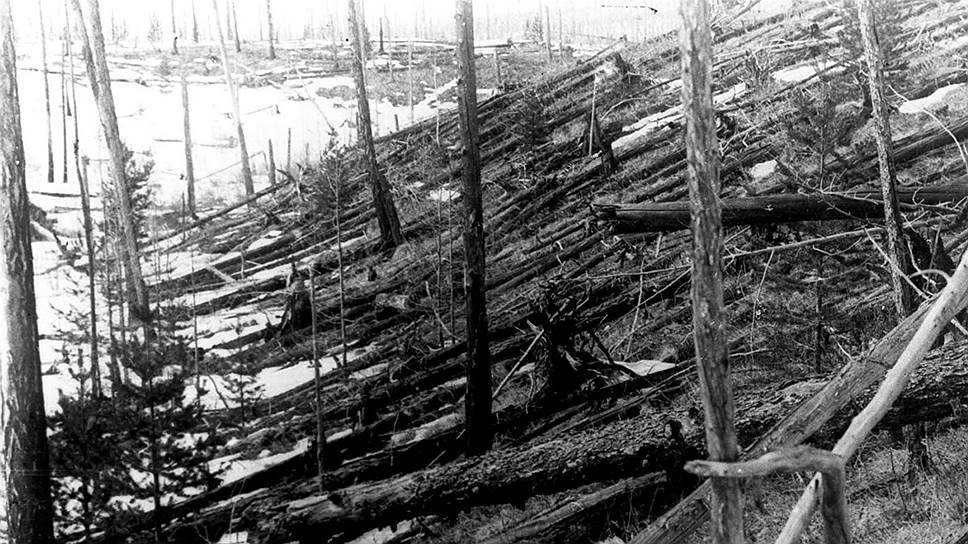
Walking in this area posed a great risk, especially during the first half of the day when strong winds were common. Furthermore, towering dead trees, reaching a height of twenty meters, would frequently collapse to the ground. It was crucial to constantly keep an eye on the decaying tree tops, in order to quickly move out of harm’s way. Additionally, one had to be cautious of the ground, as it was infested with venomous snakes.
This is how Kulik describes the center of the catastrophe, where he observed lifeless trees with torn branches and charred trunks stretching in every direction. Surrounding the trees in a radial pattern were piled tops from the core of the basin. Additionally, within the depression, numerous craters dotted the landscape. Kulik had no doubt that this was the precise location of the meteorite impact. However, time was running out to continue the search – supplies were dwindling, and a return to Vanavara and then to Leningrad was imperative.
Kulik remained convinced – he was just inches away from the breakthrough. Conversely, the scientists from the Academy of Sciences did not share his certainty. The craters appeared familiar to them and unrelated to any meteorites – such formations occur when permafrost thaws. Furthermore, the forest could have easily burned without any extraterrestrial involvement. Perhaps there was no meteorite after all?
Kulik’s aspiration to discover the Tunguska meteorite was not fated to be realized. He made a solitary return to Podkamennaya Tunguska when he spearheaded an aerial survey of a portion of the affected area, which confirmed the radial pattern of the forest damage. The planned follow-up expedition in 1940 never materialized, and in 1941 Kulik voluntarily joined the front lines, where he was captured and ultimately succumbed to typhus. Consequently, the meteorite was largely forgotten. Its significance was overshadowed in 1947 by another extraordinary celestial event – the Sikhote-Alin meteorite. Nevertheless, in 1949, E.L. Krinov published a comprehensive work that synthesized the findings from Kulik’s expeditions.
Versions and imaginations
One of the first individuals to recall the Tunguska phenomenon was the author of fiction, Alexander Kazantsev. He observed the peculiar resemblance between the enigmatic earthquake documented at the Irkutsk Observatory and the seismic waves that followed the “second gift of the Americans to Japan” – the detonation in Nagasaki.
If Kazantsev had been a careful and cautious scientist, he would have arrived at the correct conclusion: the explosion did not occur upon impact with the surface, but rather in the air – and would have come to a halt there for a period of time. However, Kazantsev was a science fiction writer and imagination took hold of him. That’s the case with the Tunguska meteorite: there was no meteorite, but instead an alien spaceship that exploded while approaching Earth. Furthermore, the explosion was nuclear. This explains everything: why a thorough search for the meteorite did not yield any results – the explosion transformed into plasma and scattered any possible remains and fragments of the ship into space, as well as the strange atmospheric phenomena that were observed after the explosion and the peculiar nature of the fallen forest.
This hypothesis, like a satellite detaching from a rocket, has taken flight on its own. It has gained a significant following and is now considered a serious theory, especially after Gagarin’s flight.
There have been numerous other hypotheses, each more original than the last. Some of them completely reject the idea of a cosmic origin for the explosion, suggesting instead that it was caused by a massive cloud of gas and air ignited by lightning. Others propose that it was the result of a giant ball of lightning or a cosmic object with an exotic nature, such as a solar plasmoid, a cluster of antimatter, an extraterrestrial laser beam from the 61st Swan, or even a black hole.
And what about this: could it all be attributed to Nikola Tesla’s experiments with his towers?

Kazantsev correctly set the general course by making assumptions that no one really doubted: the explosion most likely happened at a high altitude. This was proven by the lack of a crater and the undisturbed forest at the center of the blast. However, the fictional elements of the story played a cruel trick on the Tunguska meteorite researchers: false reports of Evenki suffering from radiation sickness, the supposed high levels of radioactivity in the area, and the existence of a mushroom cloud were still cited in reputable sources.
The hunt goes on
Meanwhile, new expeditions took place in the late 1950s (such as the 1958 expedition led by K.P. Florensky and the 1959 Integrated Amateur Expedition) to Podkamennaya Tunguska. These expeditions confirmed that there were no traces of meteoritic material, not even in microscopic form. Previously, Kulik’s samples had contained a large number of iron-nickel particles, indicating that the meteorite was made of iron. However, upon analyzing the magnetic fraction of the samples on site, it was consistently found that there was no nickel present. This meant that the samples had nothing to do with cosmic substance, as nickel is always found in meteorites alongside iron. Even the samples left by Kulik at the camp on Khushma did not contain meteoritic iron. The reason for this paradox was later realized. These samples were stored in KMET, the same place where many iron meteorites were kept. These meteorites were often sawed, ground, polished, etched, and subjected to various treatments. The most intensive work was done after the Sikhote-Alin meteorite fell, as tens of tons of fragments had to be characterized and described. In these conditions, it was difficult to prevent contamination of the samples with extraneous meteoritic matter.
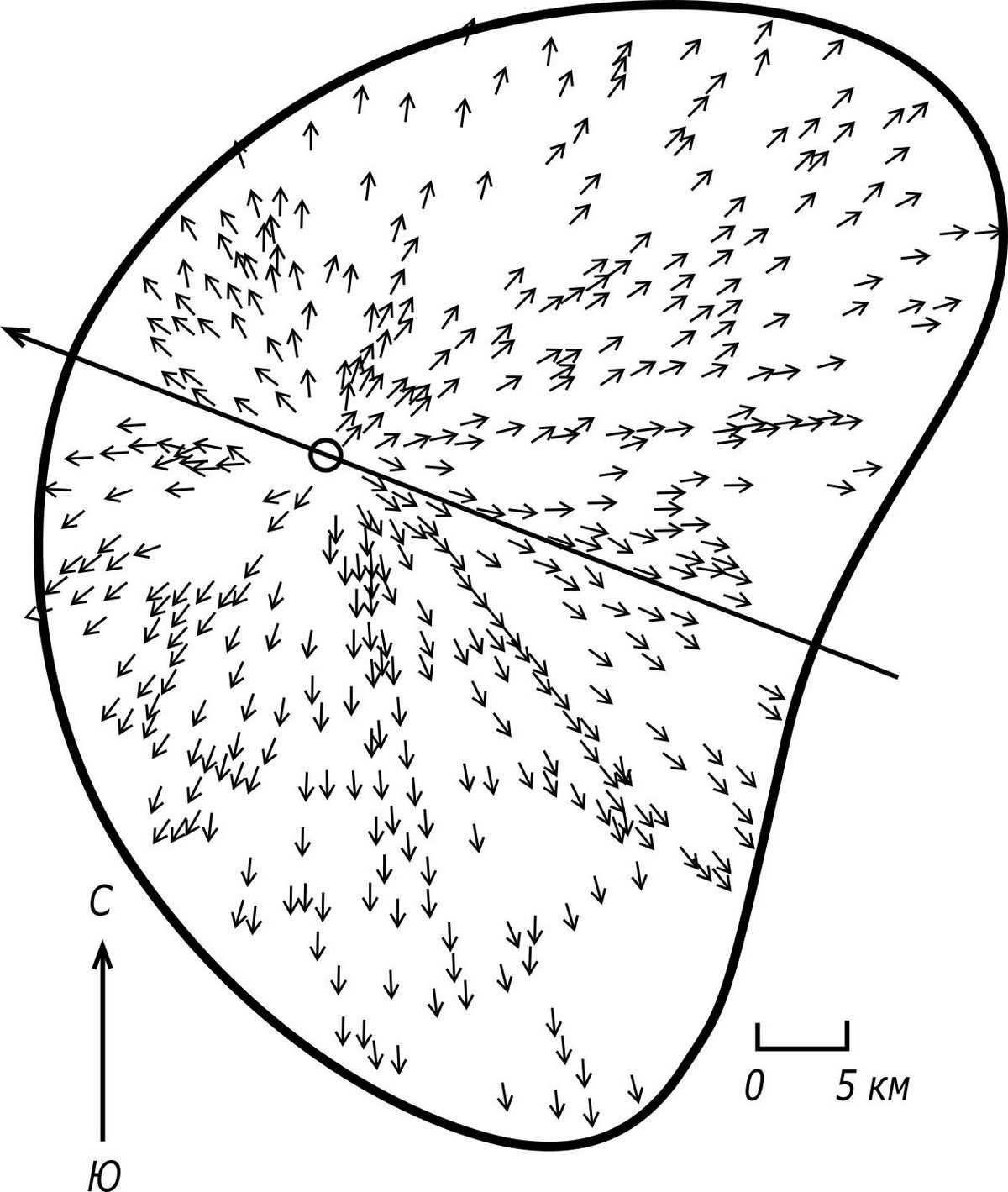
The forest outcropping’s maps were meticulously constructed across its entire expanse, which was much larger than what Kulik’s expeditions had explored. It became evident that the outcrop had a butterfly-like shape, with the axis of symmetry coinciding or coming close to the likely trajectory of the bolide. Other effects were also charted, including ray burns and the boundaries of the forest fire. These data allowed us to estimate the magnitude of the energy release – 10 17 J.
Furthermore, we had to contend with Kazantsev’s “legacy”. To address this, samples were collected for radioactivity measurements – and these measurements yielded negative results. Radioactivity was also absent in the Evenks’ skeletons unearthed from their graves, and there were no indications of anything resembling radiation sickness in medical archives.
The expeditions continued. Both the Academy of Sciences and the CSE regularly sent expeditions to the site of the Tunguska disaster. The amateur expedition, which had evolved from a casual hobby to a dedicated scientific team, achieved what Kulik and Florensky could not – the discovery of the Tunguska meteorite substance! They utilized Sphagnum moss for this purpose. Sphagnum moss has a slow and consistent growth rate, and it has the ability to trap solid particles from the surrounding environment as it grows. These particles become embedded in the moss and eventually get incorporated into the peat layer, which grows at a rate of 2 mm per year in the Podkamennaya Tunguska basin. By knowing this growth rate (which can be determined using lead-210 or botanical indicators of the catastrophe), it is possible to identify a specific layer’s age in a peat column.
For many years, an extensive survey of the cosmos was conducted with remarkable perseverance. This involved sampling sphagnum columns across the entire region and then extracting cosmic matter spheres from each layer of the column. Between 1963 and 1977, a total of 500 such columns were sampled. The results showed that individual silicate and magnetite spheres, which are associated with the deposition of meteoric matter that had burned up in the upper atmosphere, were present throughout the column profile. However, in the thin layer at a depth of 27-40 cm, the number of spheres dramatically increased to thousands! These spheres were predominantly made of silicate. The samples that contained the highest number of spheres were located in a strip along the flight path of the Tunguska body, and they also formed a plume that extended northwestward from the epicenter.
Space substance was discovered in various forms, not just as silicate balls. Its presence was evident in the unusual chemical and isotopic composition of the catastrophic layer. Specifically, this layer exhibited a significant increase in carbon-14, not associated with the balls, but rather with sharp-angled silicate fragments. This observation could support the hypothesis of a nuclear explosion (as neutrons from such explosions convert atmospheric nitrogen-14 into carbon-14), but the source of this radiocarbon is actually different: a spallation reaction. When a high-energy cosmic ray particle interacts with a nucleus of silicon-32, one of the resulting fragments is carbon-14, which remains embedded within the crystal lattice. This finding confirms the cosmic origin of not only the balls, but also many of the sharp-angled particles. Additionally, it allows for the determination of the total mass of silicate matter, as the balls were only a small fraction of it. This includes submicroscopic particles that were not preserved in the peat or extracted through conventional methods. The estimated total amount of silicate matter deposited after the explosion is approximately 4,000 tons.
On the other hand, the carbon-14 content of the disastrous layer’s organic component is lower. This can be accounted for by the infusion of a substantial quantity of carbon from sources that are not of a biological nature and originate from beyond Earth.
Additional geochemical anomalies were also discovered at the crash site. However, the interpretation of these anomalies is complex due to the fact that the projectile landed in a depression. It turns out that the depression in the Southern bog, which Kulik and some subsequent researchers initially believed to be a possible meteorite crater, is actually a vent from a prehistoric volcano. The Tunguska meteorite anomaly coincides with the anomaly of this volcano. Nevertheless, through careful analysis of the data, we were able to differentiate between the two anomalies, leading us to an important conclusion: the chemical composition of the space material found in the catastrophic layer is similar to type I carbonaceous chondrites, but it is enriched with volatile elements such as alkali metals, bromine, lead, zinc, tin, and molybdenum, and depleted in iron, nickel, and cobalt. A similar elemental composition was observed in the spectra of meteors from the Draconida stream, which are associated with remnants of comet Giacobini-Zinner, as well as in the spectra of the coma of comet Ikea-Seki during its passage through the solar corona in 1965. This confirmation supports one of the main hypotheses regarding the nature of the Tunguska object, suggesting that it was a cometary body.
Kazantsev’s primary finding was that a series of expeditions provided confirmation: the explosion took place in the atmosphere. It was not essential for the explosion to be of a nuclear nature in order to exhibit characteristics similar to nuclear explosions, as he observed that a release of energy on a “nuclear” scale was sufficient.
In my previous article, I discussed the research conducted by K. P. Stanyukovich and V. V. Fedynsky on the topic of “The Destruction of Nuclear Explosions”. V. Fedynsky also conducted a study on “The Damaging Impact of Meteorite Collisions”, which revealed that when a meteoroid with a velocity exceeding a few kilometers per second collides with the planet’s surface, it instantly transforms into a highly heated and compressed steam state along with the rocks of the target. This transformation is followed by an explosive event that creates a crater. The only energy source for this explosion is the meteoroid’s kinetic energy. In fact, the amount of kinetic energy possessed by a falling mass of several tons at a speed of 50 km/s is comparable to the energy released by a small nuclear explosion.
However, there was no crater found at Podkamennaya Tunguska. The explosion occurred in the atmosphere. What was the cause of this event?
Unlike imaginative thinkers and creators of homemade theories, scientists did not need to search for the origin of the explosion’s energy. However, they did need to identify the mechanism that would cause the meteoroid to rapidly and explosively decelerate in the air. At that time, this mechanism was already known – the gradual crushing of the body due to the force of the oncoming air. This process involves the increase of frontal resistance and tearing forces on each fragment, ultimately resulting in the transformation of the meteoroid into a swarm of particles. As a result, the meteoroid slows down, releasing its kinetic energy in the form of heat. Scientists were already somewhat familiar with this effect from the destruction of the Sikhote-Alin meteorite, although it did not occur to the same extent. It seems that the Tunguska meteoroid was much weaker and experienced a more intense crushing compared to the iron Sikhote-Alin meteorite.
Setting aside fantastical theories, numerous inquiries needed to be addressed. What precisely was the Tunguska entity? A carbonaceous chondrite? An icy comet core? A fragile “snowball” with an extremely low density? What caused the explosive disintegration and why did the shockwave take on the shape of a butterfly? What was the precise path of the Tunguska entity as it entered the atmosphere and its orbital trajectory?
The butterfly question was resolved in a straightforward manner – through experimentation. Scientists employed Wood’s technique – in order to comprehend the arrangement and location of the bomb, which was utilized to demolish an old Buick, one must visit a car junkyard with dynamite and detonate multiple old Buicks. M. A. Tsikulin and I. T. Zotkin similarly followed suit, deciding to simulate the simultaneous impact of the explosion wave and ballistic wave on a model of a forest made out of matches. They generated shock waves with the assistance of explosives. The ballistic wave caused by the Tunguska body traveling at hypersonic speed was replicated by a shock wave from a detonation cord initiated from one end (in this instance, the detonation wave propagated along the cord, moving at a speed of several kilometers per second, and venting into the air in the form of a shock cone resembling a Mach cone), and at the end of the cord, there was a TNT charge, which produced a spherical explosive wave in the final stage. When the cord was inclined at a specific angle over the match forest, it resulted in the formation of a butterfly-shaped collapse and a “dead forest” of standing matches at the epicenter. One enigma was solved. Subsequently, computers were employed to model the process of tree falling due to the impact of two shock waves – this enabled the quantification of the explosion’s energy and trajectory slope based on the shape of the fallen trees.
The discovery and analysis of the substance of the Tunguska body allowed for reasoned assumptions about its comet-like nature, rather than unfounded speculations. The popular “loose snowball” model was rejected at one point – it did not align with the data on the nature of cometary nuclei, and such a “snowball” would disintegrate too early, potentially in the stratosphere, if it could even survive until the collision with the Earth’s atmosphere.
Younger siblings of the Tunguska meteorite
And the most significant revelation of recent times is that the Tunguska meteorite, in essence, is not an entirely unique occurrence. Similar celestial bodies, which culminate in a formidable explosion, have been witnessed on numerous occasions since the “post-Tunguska” era.
The Prairie Bolide Observation Network in the United States has provided assistance in demonstrating that meteorites of various sizes, known as “Tunguska meteorites,” fall almost every year. However, due to their explosion occurring at high altitudes or in uninhabited areas, they do not create the same resonance as the Tunguska event. It should be noted that “Tunguska caliber” fragments of cometary matter are rare, while the smaller meteorites that fall annually have a significantly less impact.
Nevertheless, the Vitimsky bolide produced a similar effect to the Tunguska event, albeit on a much smaller scale. Despite its modest size and mass, it caused a forest fall resembling a “butterfly.” Another example is the recent Chelyabinsk meteorite, which is considered a “cousin” of the Tunguska meteorite. Unlike the Tunguska event, the Chelyabinsk meteorite was not the nucleus of a comet and left behind unevaporated remains after its explosion. This explosion had significant consequences, with a force of approximately half a megaton. The Borovsk bolide of 1934 is another instance of a meteorite that exploded with great force over the Kaluga region. Therefore, bolides ending their journey with powerful, “nuclear” scale explosions are not rare exceptions and may even occur more frequently than meteorite impacts.
A similar trace resembling the Tunguska “butterfly” has been discovered on Mars, although the scale of this footprint is disproportionately larger. This trace is found in the Northern Ocean and is believed by some scientists to have formed from a massive air explosion. The shock wave from this explosion is thought to have caused the indentation on the Martian crust, erasing ancient relief elements. However, these hypotheses are considered marginal.
The issue of the Tunguska meteorite has been a cause for concern among multiple generations of researchers, enthusiasts, and those intrigued by the mysterious and unknown. However, it is crucial to differentiate between scientific hypotheses and research findings from the thick layer of fantastical fabrications, akin to sediments at the ocean floor. This presence should always be kept in mind by those who choose to delve into this topic.
On the KPDV image “Tunguska meteorite” by Sergey Krasnov. The illustration featuring a butterfly is derived from the book: Bronshten V.A. Meteors, meteorites, meteoroids. Moscow: Nauka, 1987. The drawing of the unfortunate Photonchik is from “Monday” by Evgeny Migunov.
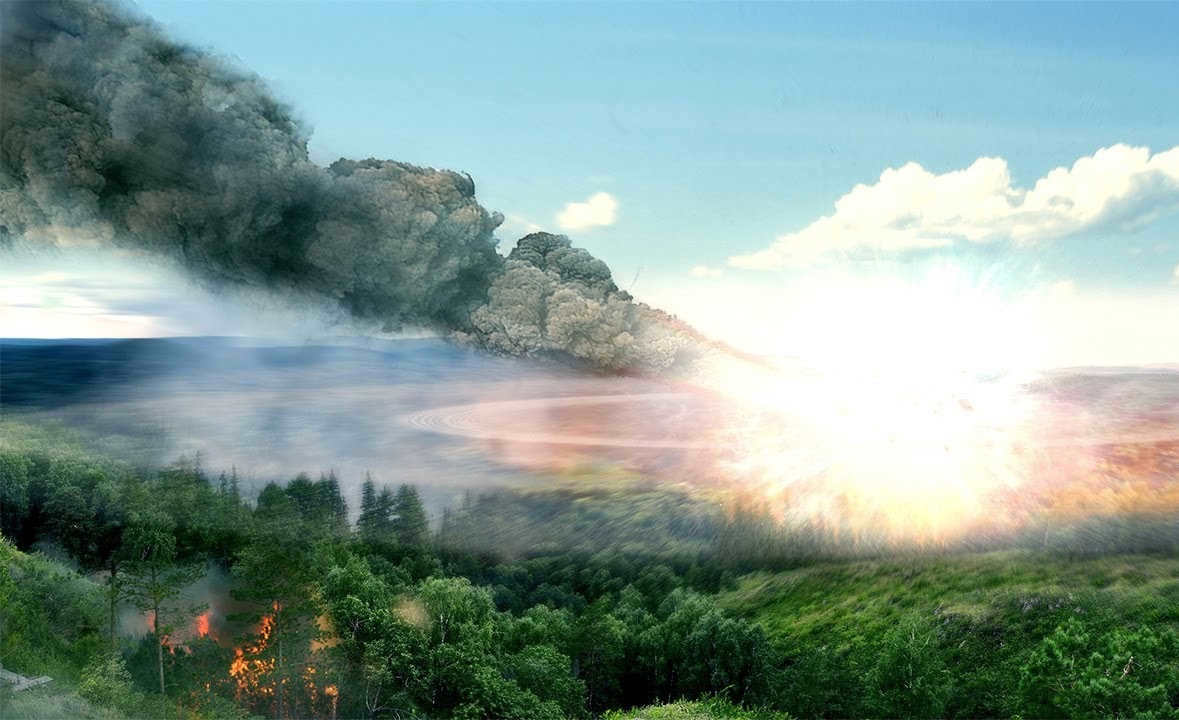
Within the Russian-speaking region, there are numerous tales of extraterrestrial phenomena. Nearly every village has a hill where locals claim to have witnessed mysterious lights in the night sky or a crater supposedly left by a passing comet. However, the most renowned and authenticated event is the Tunguska meteorite. Plunging from the heavens on an unassuming morning in June 30, 1908, it instantaneously devastated a staggering 2,000 square kilometers of dense forest, shattering windows in homes hundreds of kilometers away.
One of the most crucial and highly uncertain pieces of information regarding the meteorite is the account of its descent. The event was felt worldwide, with the wind reaching even as far as Britain, and an earthquake shaking the entire Eurasian continent. However, only a handful of individuals actually witnessed the meteorite’s dramatic fall. And it was only those fortunate enough to survive who could provide firsthand accounts of the extraordinary event.
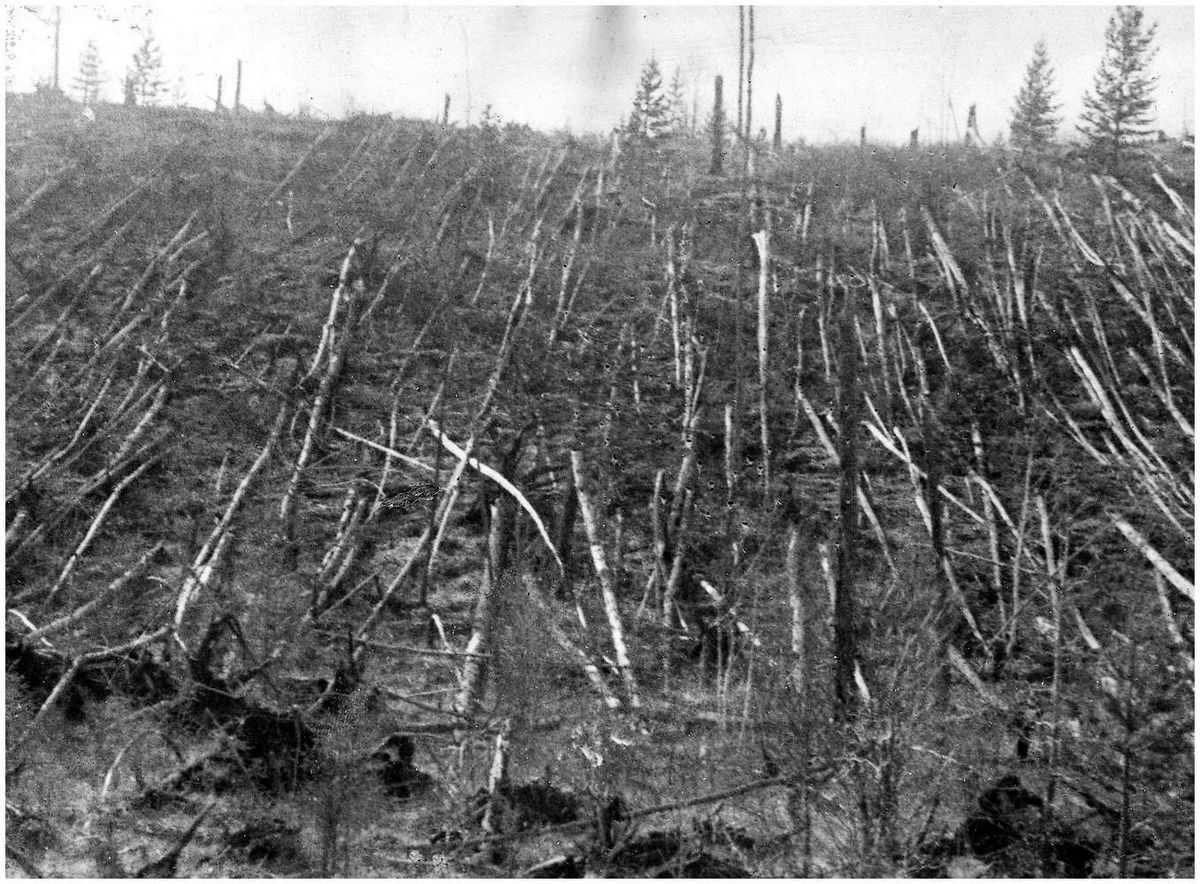
At the location where the Tunguska meteorite struck, there is a forest that has been knocked down.
What was the appearance of the Tunguska meteorite?
The most trustworthy witnesses report that a massive fiery tail traveled across the sky from the north to the east, at a 50-degree angle to the horizon. Following that, the northern part of the sky was illuminated by a flash that emitted intense heat: individuals had to remove their clothing, and dry plants and fabrics started to smolder. This was the explosion – or more accurately, the heat radiation resulting from it. The shockwave, accompanied by gusts of wind and seismic vibrations, arrived later and caused trees and individuals to be knocked over, even shattering windows up to 200 kilometers away!
There was a powerful thunderous sound when the Tunguska meteorite exploded, resembling the booming of cannons. Immediately after, there was a second, less intense explosion. Many of the witnesses, stunned by the intense heat and shockwave, only noticed the light from the second explosion, which they described as a “second sun.”
After that, the reliable testimonies come to an end. It is important to consider the early hour of the meteorite fall and the background of the witnesses – they were Siberian peasant settlers and indigenous people, such as the Tungus and Evenks. In the mythology of the Evenks, there are tales of iron birds that spit fire, which led the eyewitness accounts to have religious significance for them and for ufologists, who saw it as “credible evidence” of a spaceship being present at the Tunguska meteorite crash site.
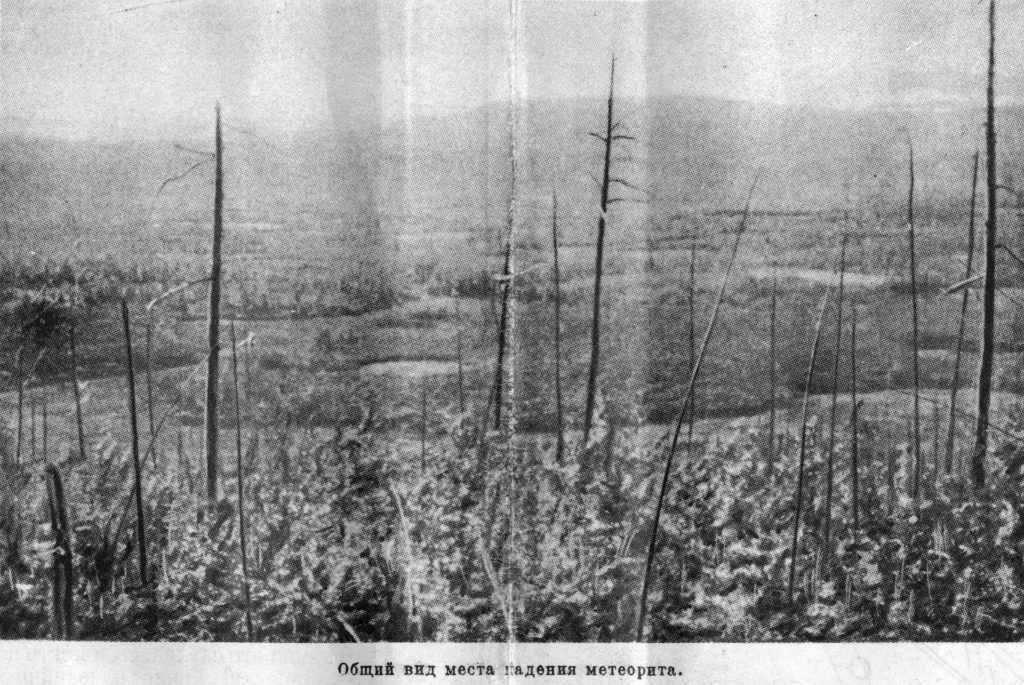
A panoramic view of the wooded area where the meteorite landed
The media also played a significant role: newspapers reported that the meteorite crashed near the railway, and train passengers witnessed a celestial object with its top protruding from the ground. Subsequently, they, along with science fiction writers, propagated various myths surrounding the Tunguska meteorite, linking it to Earth’s energy generation, interplanetary transportation, and Nikola Tesla’s experiments.
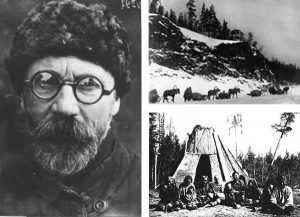
Leonid Kulik, a prominent mineralogist and meteorite specialist from the Soviet Union, was at the forefront of the initial search for the Tunguska meteorite in 1921. He organized a total of 4 (some sources claim 6) expeditions before his passing in 1942, with the promise of discovering meteorite iron for the country’s leadership. However, despite his efforts, neither the meteorite’s crater nor any remnants were found.
So, where did the meteorite disappear to, and where should we direct our search? In the following sections, we will explore the key characteristics surrounding the Tunguska meteorite’s fall and the resulting myths that have emerged.
“The Tunguska meteorite had a more powerful explosion than the most potent nuclear bomb.”
According to the latest calculations from supercomputers at the Nuclear Sandia National Laboratory in the United States, the force of the Tunguska meteorite’s explosion was estimated to be “only” 3-5 megatons in TNT equivalent. While this is more powerful than the nuclear bomb dropped on Hiroshima, it is significantly less than the previously believed 30-50 megatons associated with the Tunguska meteorite. Previous generations of scientists misunderstood the mechanism of the meteorite’s explosion, as the energy did not disperse evenly in all directions like a nuclear bomb. Instead, it was directed towards the ground in the direction of the meteorite’s motion.
“The Tunguska meteorite vanished without a trace.”
No evidence of a crater resulting from the Tunguska meteorite has ever been discovered, leading to much speculation on the matter. However, is it possible that there was never a crater to begin with? It is worth noting that we refer to the Chelyabinsk meteorite as the “little brother” of the Tunguska meteorite for a reason – it too exploded in the atmosphere, and its main component, weighing several hundred kilograms, was only located at the bottom of a lake thanks to multiple video recordings. This is due to its loose and crumbly composition, resembling a “pile of rubble” or an asteroid made up of smaller fragments. Perhaps, after losing most of its mass and energy during the fiery explosion, the Tunguska meteorite was unable to create a significant crater. Over the course of 13 years between the incident and the first expedition, it is possible that any potential crater could have transformed into a lake itself.
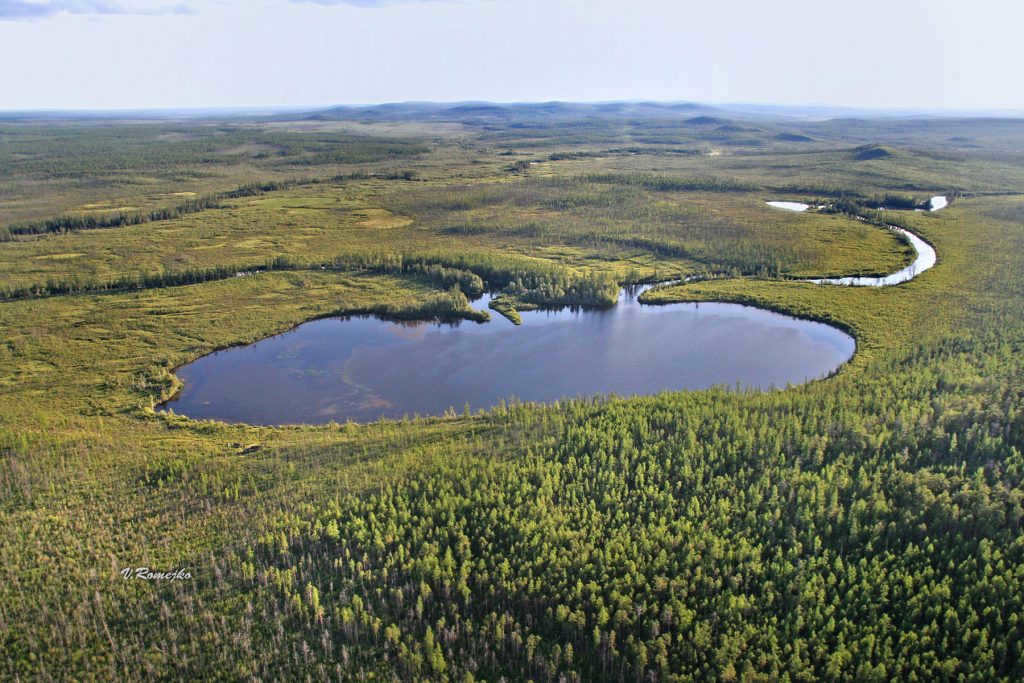

Lake Cheko is considered as a potential impact site of the Tunguska meteorite.
In 2007, researchers from the University of Bologna made a discovery that the Tunguska meteorite may have created a crater, which is possibly located at Lake Cheko, approximately 7-8 kilometers away from the explosion site. The shape of the lake is elliptical and points towards the meteoritic forest, resembling the characteristic conical shape of impact craters. The age of the lake is estimated to be the same as the meteorite fall, and magnetic studies indicate the presence of a dense object at the bottom. Ongoing studies are being conducted on the lake, and there is a possibility that the Tunguska meteorite itself, the cause of all the excitement, may soon be showcased in exhibition halls.
Interestingly, Leonid Kulik was actually searching for similar bodies of water near the location of the impact. However, during that time, there was a lack of scientific knowledge regarding meteorite explosions in the atmosphere, which resulted in the remnants of the Chelyabinsk meteorite scattering quite far from the explosion site. While investigating one of these “promising” lakes, Kulik stumbled upon… a tree stump resting on the lake bed. This unfortunate discovery led to a humorous description of the Tunguska meteorite as “an elongated cylindrical object resembling a log, composed of a unique type of extraterrestrial wood.” Surprisingly, there were individuals who took this account seriously, causing quite a stir.
There are numerous pseudoscientific theories surrounding the Tunguska meteorite, which have their roots in jokes or misinterpreted statements. It was through this avenue that Nikola Tesla became entangled in the meteorite narrative. In 1908, he made a pledge to illuminate the path in Antarctica for Robert Peary, who is recognized as one of the two individuals to have successfully reached the North Pole.
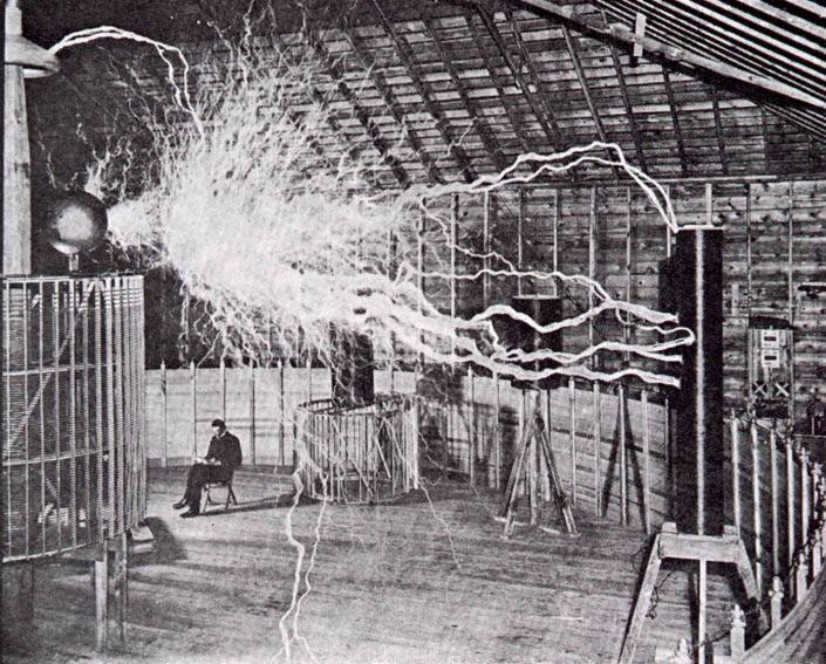
Nikola Tesla conducting experiments in his lab
It is reasonable to assume that Tesla, being the innovator of the modern AC electrical system, had a more practical approach in mind rather than causing an explosion far away from Robert Peary’s route in Siberia, as the maps he allegedly requested indicated. At the same time, Tesla himself stated that the transmission of energy over long distances was only feasible using aether waves. However, the absence of ether as a medium for electromagnetic wave interaction was proven after the renowned inventor’s demise.
There are currently other fictional accounts of the Tunguska meteorite that are being presented as factual. For instance, some individuals subscribe to the idea of an “extraterrestrial vessel traveling backwards in time,” which was first introduced in the comical novel “Monday Begins on Saturday” by the Strugatsky brothers. Additionally, members of Kulik’s expeditions, who were incessantly harassed by gnats in the taiga, have written about billions of mosquitos congregating into a massive sphere, with their collective warmth generating an explosive burst of energy equivalent to megatons. Fortunately, this particular theory has not been seized upon by sensationalist media outlets.
“The location where the Tunguska meteorite exploded is an unusual spot.”
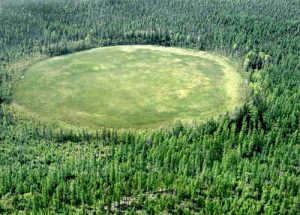
The current state of the area where the Tunguska meteorite exploded.
Initially, experts believed that there was no crater or meteorite found at the site. However, this can be attributed to the fact that the meteorite exploded in the air, causing its fragments to disperse with less energy and become difficult to locate in the vast taiga. Nevertheless, there are always “inconsistencies” that fuel speculation surrounding the Tunguska meteorite. Let’s explore some of these inconsistencies.
- An undeniable indication of the supernatural nature of the Tunguska meteorite is the occurrence of extraordinary events across Europe and Asia in the summer of 1908, just before the celestial body’s descent. Reports of silver clouds, glowing skies, and white nights flooded in, further cementing the belief in its otherworldly origins. Skeptics may argue that any meteorite or comet would have a dust plume preceding its entry into the atmosphere, but a thorough investigation into scientific records reveals that these atmospheric anomalies occurred only after the meteorite had already fallen. This serves as a stark reminder of the dangers of blindly trusting sensationalist headlines.
- They also observe the fact that the center of the meteorite explosion had trees that remained standing without branches and leaves, resembling poles. This phenomenon, however, is common in powerful atmospheric explosions – similar to the surviving houses and pagodas in Hiroshima and Nagasaki, as well as in the epicenter of the explosion itself. The movement of the meteorite and its disintegration in the atmosphere caused trees to fall in the shape of a butterfly, which initially caused confusion. Nevertheless, the infamous Chelyabinsk meteorite left a similar mark; there are even butterfly-shaped craters on Mars. These enigmas were only resolved in the latter half of the 20th century, coinciding with the advent of nuclear weaponry in the world.
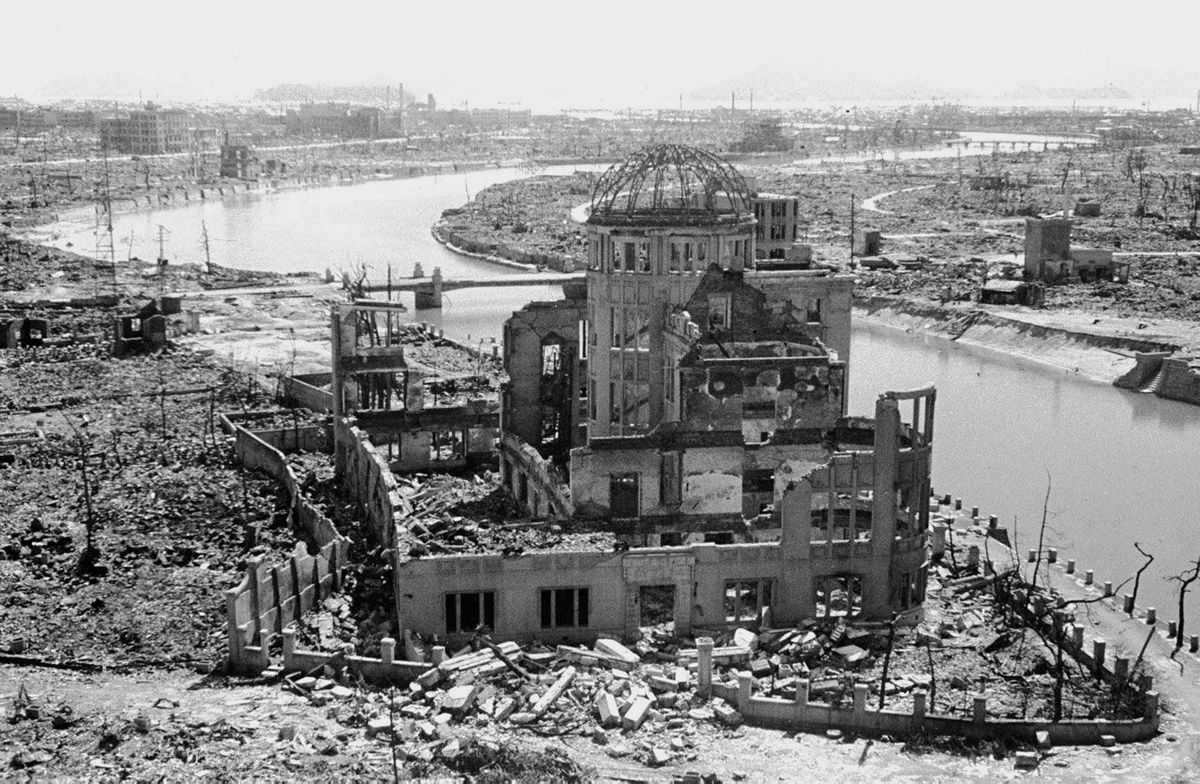
This house was located 260 meters away from the epicenter of the Hiroshima explosion. The houses further away were completely destroyed, leaving no walls standing.
- Another interesting phenomenon resulting from the explosion is the rapid growth of trees in the area where the forest was decimated. This growth is mainly attributed to the electromagnetic and radiation effects rather than the thermal bursts. The powerful explosion caused by the meteorite impact occurred in multiple dimensions, and it’s not surprising that the trees have thrived in the fertile soil exposed to sunlight. The heat radiation and trauma experienced by the trees also contribute to their growth, similar to how scars form on human skin. Additionally, the meteorite fragments, including iron and silicate balls, found within the wood may have further accelerated the plant development.
Therefore, the occurrence of the Tunguska meteorite in the autumn is remarkable solely due to the immense power of nature and the extraordinary nature of the event, rather than any supernatural connotations. Science is advancing and becoming more integrated into people’s daily lives – with the use of satellite TV, satellite navigation, and the ability to view images of deep space, individuals no longer hold firm beliefs in the celestial realm and do not mistake astronauts in their white spacesuits aboard the International Space Station for angels. Furthermore, in the future, we can anticipate even more astonishing phenomena than meteorite falls – such as the untouched plains of Mars, devoid of human interference.
Did you find this article interesting? Don’t forget to share it with your friends!
What is this phenomenon known as the “Tunguska meteorite”? In the year 1908, a celestial incident took place on our planet that captured the interest of numerous scientists. A mysterious object from outer space descended upon Earth, resulting in significant ecological devastation.
Ever since, it has been referred to as the “Tunguska meteorite”. Over a century has passed since this catastrophe occurred, yet scientists have yet to proclaim: “The enigma of the Tunguska meteorite has been unraveled”.
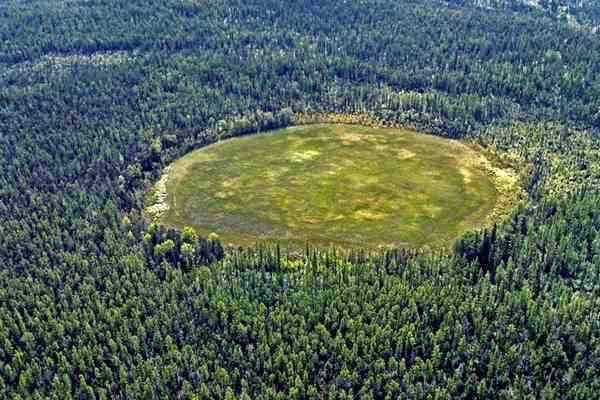
The Tunguska meteorite’s descent
An immense explosion occurred on June 30, 1908 in the Krasnoyarsk region near the Podkamennaya Tunguska River, accompanied by a display of remarkable light and sound effects.
In the early hours of the morning, inhabitants of the neighboring village of Vanavara as well as nomadic Evenks who were engaged in hunting in the vicinity witnessed an extraordinary event. A colossal fireball was traversing the sky, moving in a southeastern to northwestern direction.
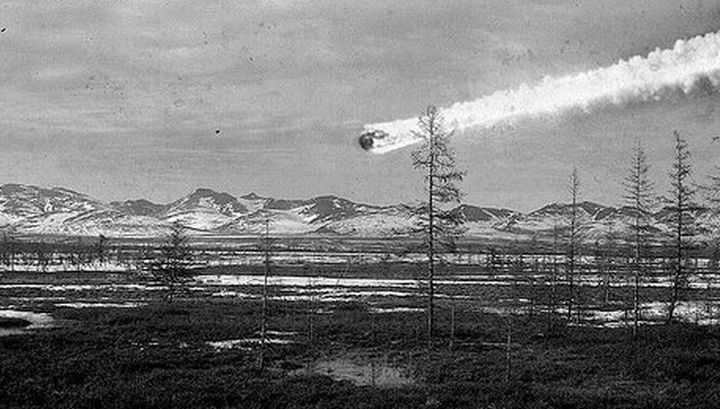
The descent of the celestial body was accompanied by loud thunderous sounds. After some time, the unidentified object plummeted to the surface of the Earth, resulting in an immensely powerful explosion that reached a height of up to 10 kilometers.
In terms of TNT equivalent, the energy released during the explosion was estimated to be between 20 and 40 megatons. In terms of sheer power, the blast was 2,000 times more intense than the nuclear explosion that occurred in Hiroshima in 1945.
For scientists, determining the origin and calculating the size of the Tunguska object remains a challenging task.
The coordinates of the Tunguska meteorite impact on the map have been established as 60°54’7″N, 101°56’4″E.
The aftermath of the Tunguska meteorite’s impact
The impact of the Tunguska meteorite caused widespread destruction in a 40-kilometer radius, particularly around the tributaries of the Podkamennaya Tunguska – Kimcha and Khushmo. Over 2 thousand square kilometers of forest were completely devastated.
Additionally, the powerful explosion triggered a massive fire, resulting in further damage to surrounding areas. The intense light flash and the release of scorching gases caused significant burns to numerous animals and humans.
The explosion had far-reaching effects, with buildings near the impact site being completely obliterated and windows of houses hundreds of kilometers away being shattered. The shock wave generated by the blast was detected by observatories worldwide.
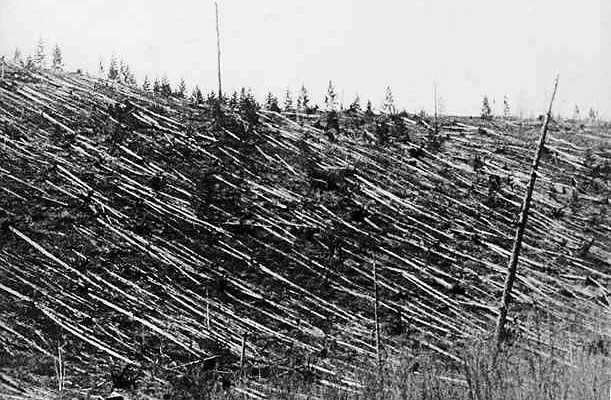
Scientists discovered a 250-meter strip of extraterrestrial dust at the site of the Tunguska meteorite explosion. Within the sphagnum, they uncovered silicate and magnetite particles, as well as tiny glass spheres. Additionally, they found traces of soft metals, such as titanium, cadmium, silver, zinc, and various other elements, within the resin of larch trees.
Only a few individuals were present to witness the astounding Tunguska explosion, and the information they provided holds immense scientific significance.
Among those who observed the event was a young man named Ilya Tyganov, who at the time was twenty years old. According to his account, a few days prior to the Tunguska explosion, the sky was unusually luminous. It was not the typical appearance of the northern lights, which only illuminates a portion of the sky. On that night, the dogs were howling and people struggled to find sleep.
Three nights later, in the early morning hours, Tyganov witnessed what he described as a “second Sun” hurtling towards the Earth. The brightness was so intense that direct eye contact was impossible.
The luminous object traveled at an incredible speed. Upon impact, a thunderous noise akin to a nuclear explosion resonated, causing the Earth to tremble. Simultaneously, a smokeless column of fire shot into the sky while a fierce gust of wind swept through the area. The force of the blast uprooted trees, debris rained down, and the air filled with the sounds of terrified women and crying children.
Following that, an eerie quiet fell upon the surroundings. The once bright sky transformed into a gloomy shade, while the leaves on the trees underwent a metamorphosis from vibrant green to a somber yellow, and eventually to a deep black hue. A silver barrier loomed in the distance, stretching towards the river, persisting for an uninterrupted span of eight hours. The subsequent two nights witnessed a cacophony of howls and barks from the dogs, accompanied by an unusually luminous sky. Throughout the summer season of that particular year, the forest was devoid of any signs of animal life, and not a single fish was caught.
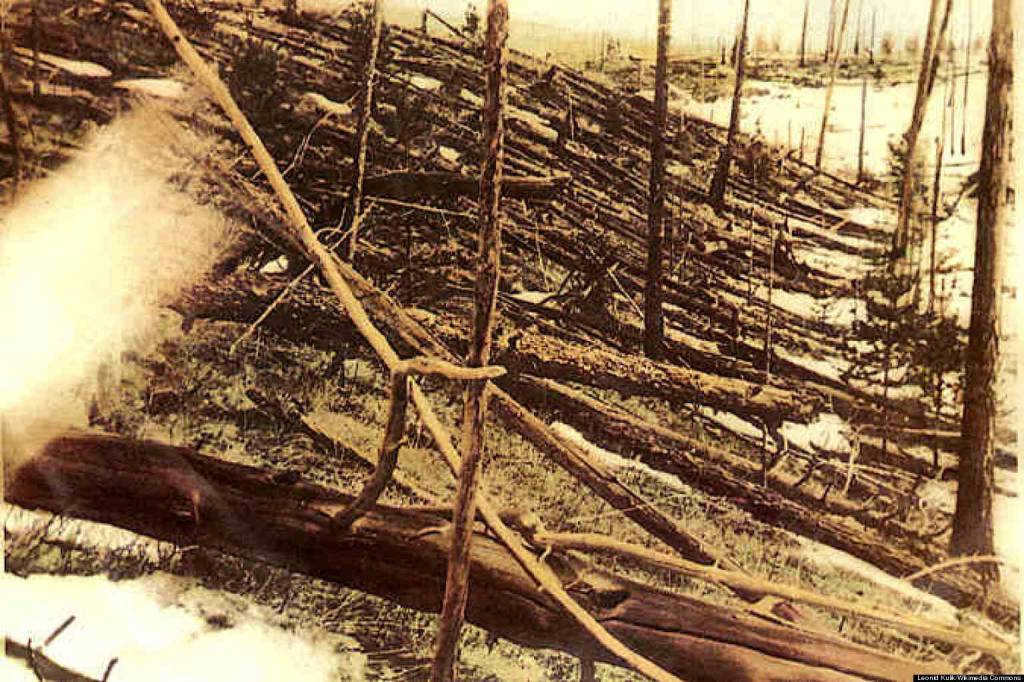
The testimonies of the Shanyagir brothers are quite fascinating, as they claim to have witnessed two explosions. According to them, their chum was located about 30 kilometers away from the actual site of the explosion.
"Early in the morning, my brother and I returned from the river and laid down on our bed, falling into a deep sleep. Suddenly, we were awakened by an inexplicable tremor. We could hear a strong wind howling behind us. Chekaren thought it was the sound of many ducks flying by. Then, something forcefully pushed me, causing me to hit my head painfully.
We were both terrified and immediately started calling out for our parents. As we crawled outside, there was a sudden thunderous noise. The ground beneath us shook violently, and a powerful gust of wind knocked our tent down.
Witnessing trees collapsing, the entire surrounding area – moss, needles, and dry wood – ignited into flames. Smoke engulfed everything, causing immense discomfort to my eyes due to the smoke and the scorching heat.
Over the mountain, where the forest had already been decimated, a sudden burst of intense brightness occurred, with a colossal radiant orb resembling the sun emerging. In an instant, a tremendous clap of thunder resounded once more.”
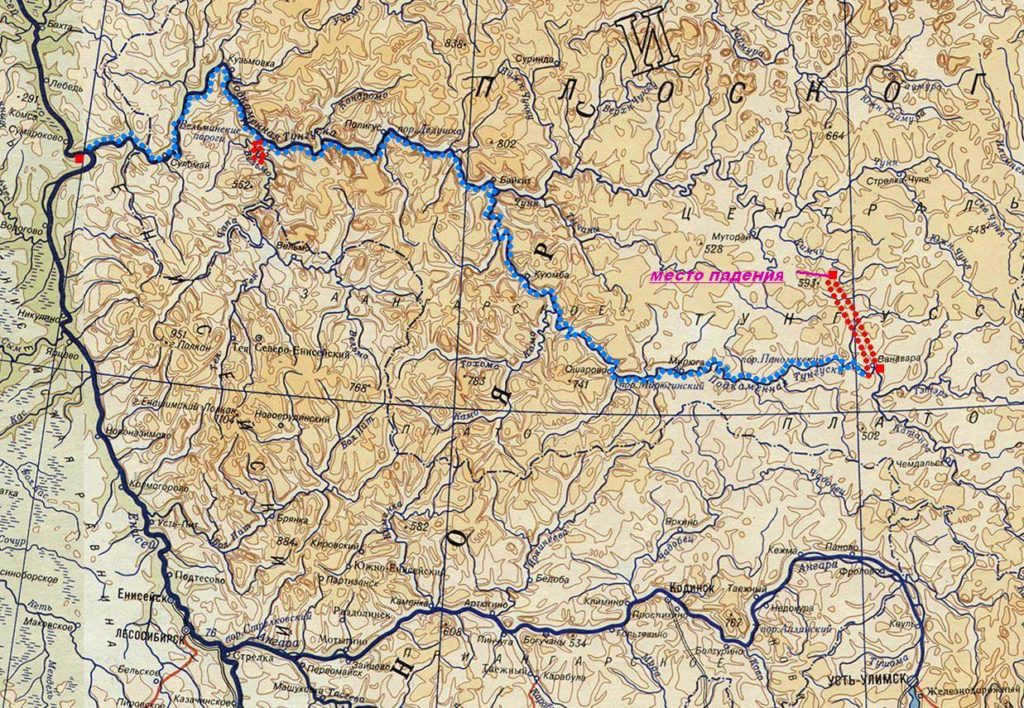
Variations on the origin of the Tunguska phenomenon
Up to this day, the cause of the Tunguska event remains a mystery. There have been over 100 theories proposed, ranging from the Tunguska meteorite impact to an extraterrestrial explosion. However, none of these theories have been universally accepted or proven.
The initial theory put forward was that of a meteorite fall and explosion in Tunguska. Many scientists still support this idea, despite the lack of evidence such as a crater or the actual meteorite remnants. They suggest that the explosion occurred in the sky before it could make an impact on the ground.
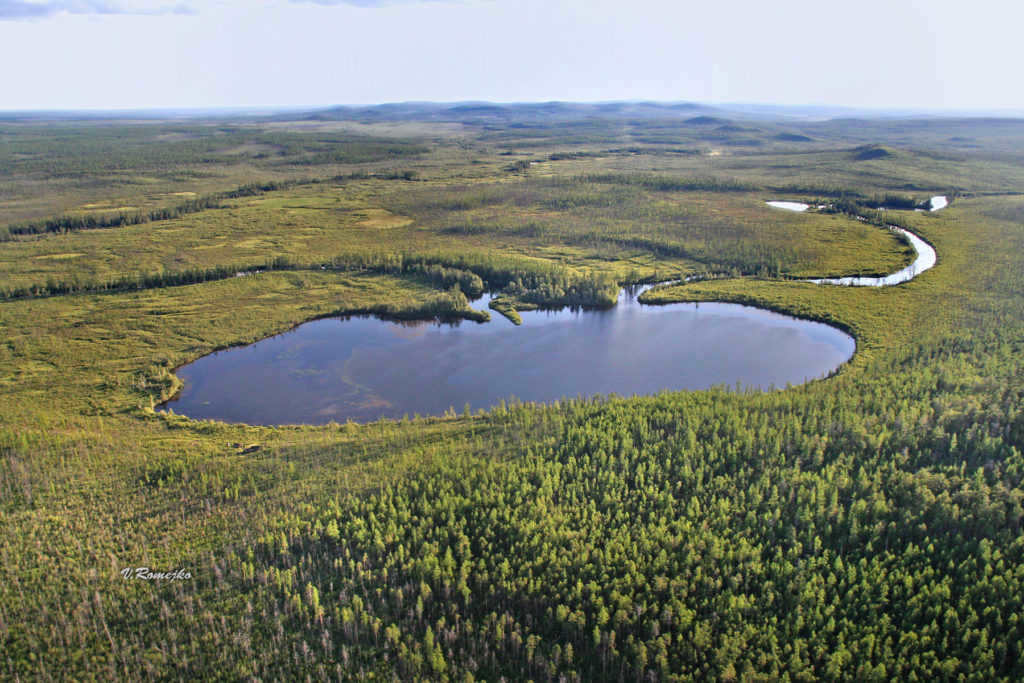
With its regular elliptical shape pointing towards the forest that had once fallen, Lake Cheko boasts a conical form in another dimension, characteristic of impact craters. By employing magnetic techniques, scientists were able to confirm the existence of a solid entity, most likely the Tunguska meteorite, resting at the lake’s depths. The exploration of Lake Cheko remains an ongoing endeavor.
New Ideas on the Tunguska Meteorite
The Role of Magnetic Fields
In the 1980s, Soviet scientists S. Simonov and A. Simonov proposed a fascinating hypothesis regarding the Tunguska meteorite. According to their theory, this celestial object possessed its own magnetic field.
As the meteorite entered the Earth’s atmosphere at an astonishing speed, the air surrounding it became intensely heated and ionized. This led to the initiation of complex electromagnetic processes within the meteorite’s shell, as the magnetic field lines interacted with the ionized air currents.
In the denser layers of the atmosphere, the meteorite’s plasma shell was torn away by the powerful air currents, leaving behind a concentrated mass of highly ionized air and electromagnetic fields. This phenomenon, known as a plasmoid, resembled a fiery lightning ball.
The explosion of the magnetized plasmoid of the Tunguska meteorite occurred directly above the crater of a paleovolcano, which possessed its own magnetic anomaly. It is believed that this magnetic attraction played a significant role in the meteorite’s final destination.
Comet hypothesis
The comet hypothesis, proposed by American meteorologist Francis Whipple in 1934, is the second most popular theory regarding the Tunguska object. Soviet astrophysicist Vasily Fesenkov further developed this theory, suggesting that the explosion and glow were caused by a comet that fragmented upon impact. Some propose that this comet, made up of cosmic debris and ice, detonated while still in the atmosphere at an altitude of 5 kilometers.
Over the course of studying the Tunguska catastrophe, researchers have put forth various alternative explanations:
The descent of an asteroid
A Russian scientist named Ivan Murzinov has proposed that our planet experienced the impact of a meteoroid originating from an asteroid. As it traversed through the Earth’s atmosphere, the meteoroid disintegrated due to the extreme heat and pressure it encountered. The resulting explosion of the Tunguska meteoroid took place approximately 35 kilometers above the Earth’s surface. The powerful shock wave caused trees to be toppled, and the intense heat from the explosion ignited a forest fire. While smaller fragments of the meteoroid were incinerated, larger pieces fell at a considerable distance from the blast site.
It is possible that Tunguska ball lightning was caused by fluctuations in the electric field or the accumulation of a substantial amount of energy.
The Earth colliding with a mass of antimatter
This theory was proposed by American scientist La Paz. He supported his hypothesis by pointing out the high concentration of radioactive isotopes found at the Tunguska impact site. Soviet physicist Boris Konstantinov suggested that this could explain the absence of meteorite or asteroid fragments.
Earth Penetration by a Tiny Black Hole
A group of physicists in Texas have put forward a theory suggesting that the object that hit the Earth was not a meteorite, but rather a miniature black hole that formed as a result of a more powerful explosion.
Unsuccessful Experiment by Physicist Nikola Tesla
On the same day as the Tunguska explosion, the renowned physicist Nikola Tesla was conducting experiments on wireless transmission of electrical energy in his laboratory on Long Island.
Previously, Tesla had claimed that he could provide lighting for Robert Peary’s scientific expedition to the North Pole and had requested maps of sparsely populated areas in Siberia. However, after the Tunguska disaster, funding for his experiments was halted and his laboratory was subsequently destroyed.
Although there is no concrete evidence, this theory appears plausible because it provides an explanation for the absence of clear indications of a meteorite collision.
Seismic activity coupled with the release and explosion of natural gas
According to geologist Yuri Nikolaev, who proposed this theory, the Tunguska event was not caused by a meteorite explosion, but rather by the eruption of natural gas from the Earth’s depths, which was then ignited by a celestial body. This hypothesis is consistent with the testimonies of eyewitnesses.
Tunguska spaceship crash with extraterrestrial beings
And this assumption has been made )
Fascinating trivia
One of the enigmas is the Devil’s Cemetery – an abnormal zone, the location where the Tunguska meteorite descended.
It was first mentioned in the 1920s. The area where the Tunguska meteorite fell has a peculiar negative impact on humans and animals. As people approach the edge of the clearing, they start experiencing pain, an inexplicable feeling of fear and unease.
Animals that have been in the vicinity of the explosion cease eating and eventually perish. Their flesh takes on a crimson hue.
Another reason for the change in color of the meat of animals that were killed at the Tunguska catastrophe site is due to a chemical reaction between the muscle protein and carbon monoxide. This reaction causes the meat to turn a vibrant shade of red.
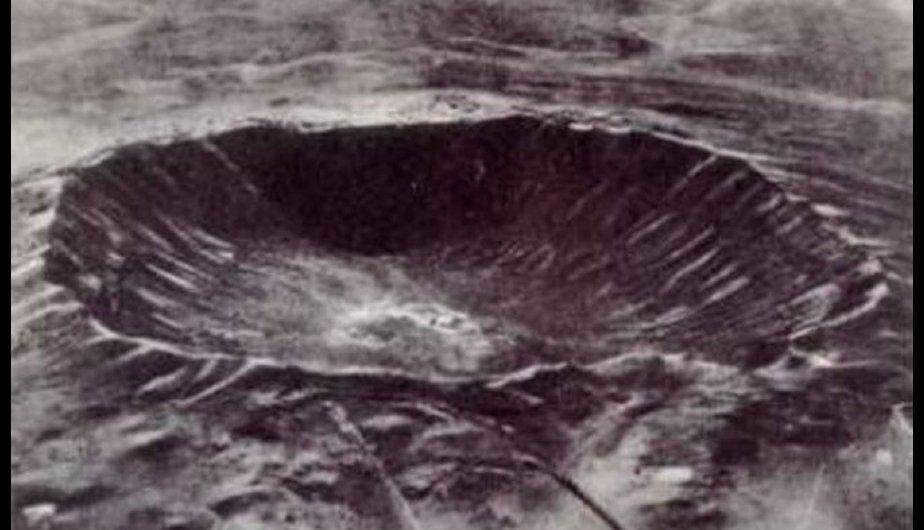
In the mid-1980s, researchers A. Simonov and S. Simonov hypothesized the presence of an alternating magnetic field in the Tunguska anomalous zone, which emerged during the descent of the magnetically active Tunguska meteorite.
It is a known fact that when the threshold of electric current is surpassed, blood electrocoagulation takes place. The animal perishes due to extensive thrombosis. Scientists attribute the vibrant red hue of the internal organs to heightened capillary blood flow.
And now
At present, the location where the Tunguska phenomenon descended appears as a circular clearing when observed from a satellite. It is worth noting that the forest in this vicinity has remarkably regenerated at a rapid pace: larch trees reappeared within a span of 7 years, while conifers took 9 years to regrow. This occurrence has prompted researchers to consider the possibility of an elevated radiation background.
An alteration in the Rh-factor protein has been identified among the Evenks residing in the vicinity of the Lower Tunguska tributary. This modification is believed to have originated from a common ancestor who possessed the mutated gene and was located near the epicenter of the explosion.
In 1995, the area where the Tunguska catastrophe transpired was designated as a protected nature reserve by the government.

The history of Earth is filled with various planetary-scale cataclysms caused by external impacts, but most of these monumental events occurred in ancient times. Neither humanity nor present-day civilization has experienced any harm from collisions with celestial objects. Our planet has managed to absorb the aftermath of these colossal disasters on its own, leaving behind unique geographical features and massive craters as reminders of such large-scale incidents.
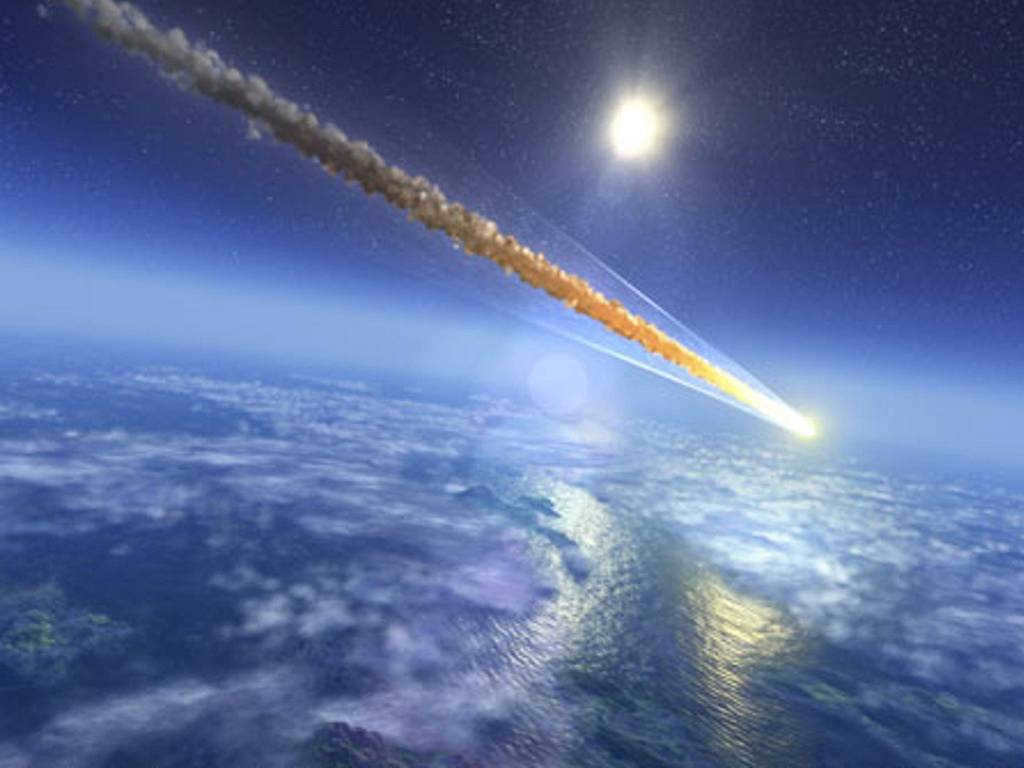
In the distant future, spanning hundreds of thousands of years, the Earth was undisturbed by space, allowing for the flourishing of human civilization. However, nature made its presence known once again in the 20th century, granting earthlings a remarkable opportunity to witness a momentous event. On June 30, 1908, the Tunguska meteorite descended from the heavens, serving as a stark reminder of our vulnerability in the face of the Universe. Even after 110 years have passed since that fateful day, the scientific community and a legion of passionate amateurs remain captivated by the enigma of the Tunguska meteorite. To this day, we persist in our quest to unravel the mystery of what transpired over the vast expanse of the Siberian taiga in the early morning of June 30, 1908.
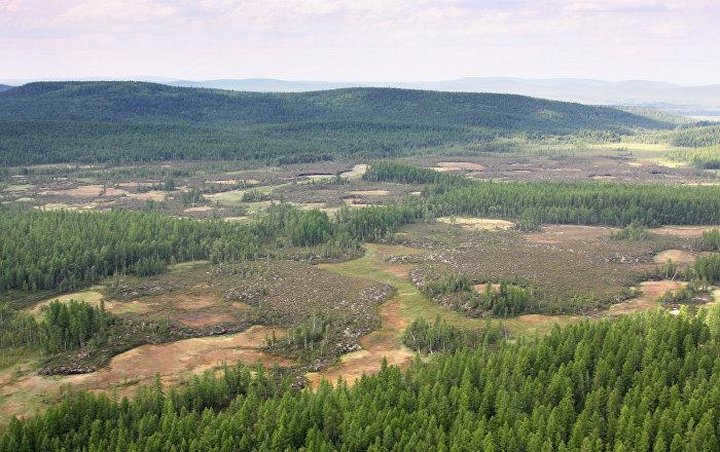
The Tunguska meteorite in its initial moments following the disaster
In the early hours of June 30, the entire northeastern region of the sky above Eastern Siberia became illuminated by a brilliant light that overshadowed the emerging Sun. Shortly after, a second sun appeared in the sky, causing the entire planet to tremble. Within a matter of seconds, an incredibly powerful shockwave swept across the extensive area. The apocalyptic spectacle concluded with an immense rumbling sound.
The explosion was so intense that it caused seismic activity, which was detected by scientific observatories located thousands of kilometers away in Europe and across the ocean. The shockwave traveled around the world twice, causing a significant increase in atmospheric pressure and fluctuations in the Earth’s magnetic field. This event marked the first time that humanity witnessed and experienced the immense power of a cosmic catastrophe.
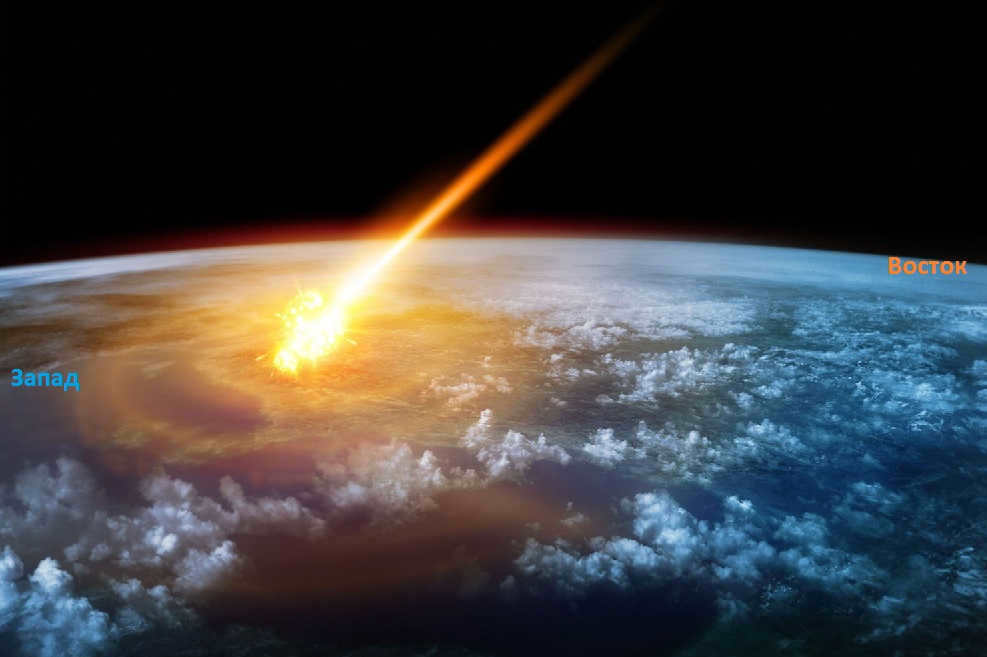
A unique natural event was witnessed by people across the vast territory of the Russian Empire and practically throughout Western Europe. Night was turned into day for several consecutive days. These regions of the planet experienced White Nights, a natural phenomenon that had never been encountered before. Luminous clouds continued to hang in the sky, even in the Southern Hemisphere. The inhabitants of Australia and Durban in South Africa observed luminous clouds in the sky for an additional week. Throughout the summer of 1908, inhabitants of Eurasia observed bright morning and evening dawns that disrupted the normal flow of daily time.
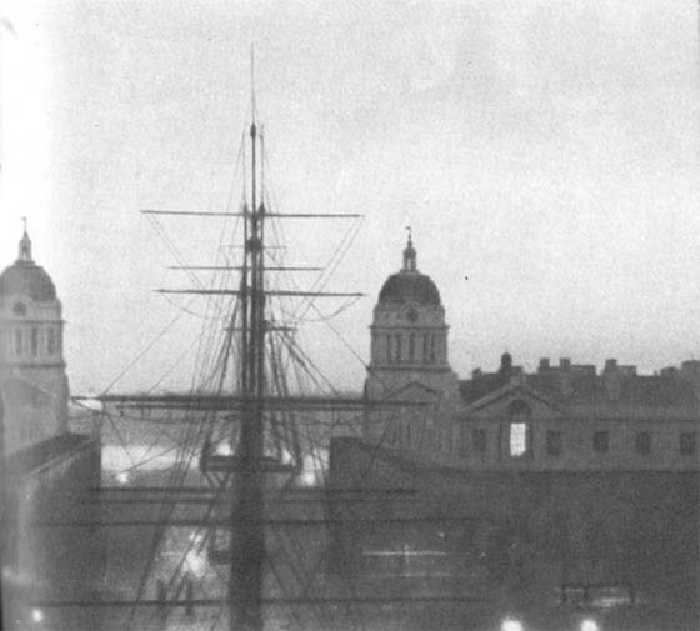
Details, fascinating information, and particulars
The area surrounding the Podkamennaya Tunguska River, which was the landing site of the Tunguska meteorite, is a vast expanse. In terms of size, this region in the East Siberian taiga is equivalent to the area of Germany. The only inhabited structure near the impact site was the Vanavara settlement, situated 65 km away from the epicenter of the explosion. The indigenous people of the area, the Evenks, experienced the full impact of the collision. They witnessed the event firsthand and provided valuable testimonies to scientific expeditions. As described by local residents, the Tunguska meteorite explosion occurred at a high altitude, causing a visible flash within a radius of 300-400 km. Further investigations by scientists revealed that the celestial body detonated at an altitude of 6-10 km.
The events leading up to the meteorite’s fall were equally intriguing. For a duration of 5 minutes, residents of Krasnoyarsk province witnessed the trajectory of a sizable celestial object. By cross-referencing the accounts of eyewitnesses, it became evident that the extraterrestrial visitor arrived from the east.
The magnitude of the celestial body is evident from the intensity of the explosion. The sound of the blast could be heard within a 1000 km radius. Similarly, the ground vibrations caused by the catastrophe were physically felt at the same distance from the epicenter.
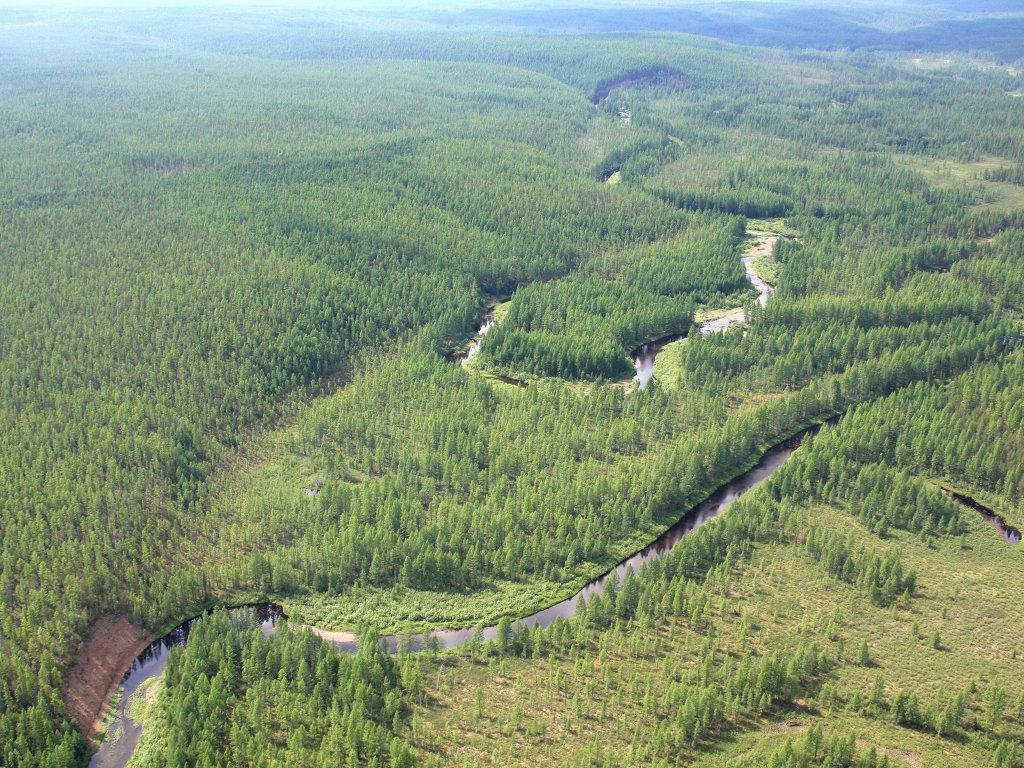
Thanks to the expeditions conducted by L. A. Kulik from the Soviet Union in the years 1927-1939, the world was able to witness the first photographs of the site where the catastrophic event took place, allowing for a true assessment of its magnitude. With the precise location of the Tunguska meteorite impact now marked on the map, experts were able to analyze the data collected by Soviet scientists at the scene and make approximate calculations regarding the physical characteristics of the celestial body and the intensity of the explosion. According to proponents of the meteorite theory, on that fateful day, the Earth collided with a meteorite weighing up to one million tons, hurtling through space at an enormous velocity of 30-40 km/s. The energy released from the resulting explosion is estimated to be equivalent to 10-40 megatons of TNT.
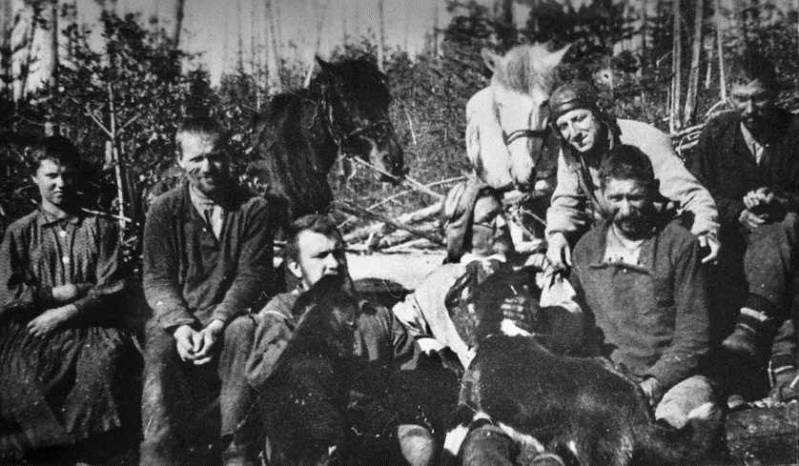
The enigma of the Tunguska meteorite: theories and hypotheses
It wasn’t until 1938 that Soviet scientists were able to capture aerial photographs of the area where the disaster occurred three decades prior. The findings from this research were astounding and led to a plethora of theories and hypotheses about the object in question. Currently, the following main theories are being considered regarding the Tunguska event:
- collision between the planet and a comet;
- the descent of a cluster of meteorites that belonged to a massive meteor stream;
- impact of a rocky meteorite;
- a catastrophe caused by an object of terrestrial origin;
- the crash of an interplanetary spacecraft of extraterrestrial origin.
Every hypothesis is supported by strong arguments. Nevertheless, despite the relatively firm stances of proponents of each version, there is a lack of concrete evidence in support of any one hypothesis. Instead, there are only conflicting facts that give rise to unwarranted speculation and conjecture.
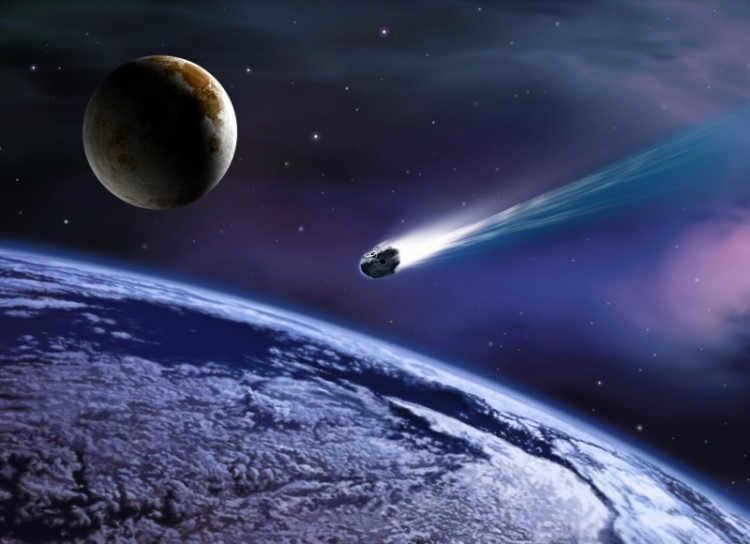
The theory of a comet is considered the most plausible explanation for the event, as it is believed to have been caused by an atmospheric explosion. It is speculated that approximately 110 years ago, Earth experienced a glancing impact from an icy celestial object. The intense gravitational forces from the impact caused the cosmic body to break apart. This conclusion is supported by the airborne nature of the explosion and the absence of any direct contact evidence with solid extraterrestrial material on the Earth’s surface. The fragments believed to be from the Tunguska meteorite, discovered by Soviet scientists, have actually turned out to be pieces of ancient ice dating back to the Ice Age. The composition of this ice is predominantly water, whereas typical cometary ice is composed of gaseous substances such as methane, ethane, and ammonia.
The theory of the meteorite is also valid, however, the records from the observatory indicate that there was no significant meteor shower on Earth during the summer of 1908. There is no need to argue that astronomers missed the encounter between the planet and meteorites. Typically, astronomical phenomena like this leave behind plenty of other evidence. Supporting the idea that the event was caused by a meteorite, Russian scientist A.V. Voznesensky, who was the director of the Irkutsk Observatory at the time, put forward his own version.
After a large monolithic rock, believed to be a fragment of a celestial body that exploded, was discovered in the vicinity of the catastrophe, the hypothesis of a rock meteorite falling to Earth was proposed. It was later determined that the rock fragment had been brought to the area by a glacier.
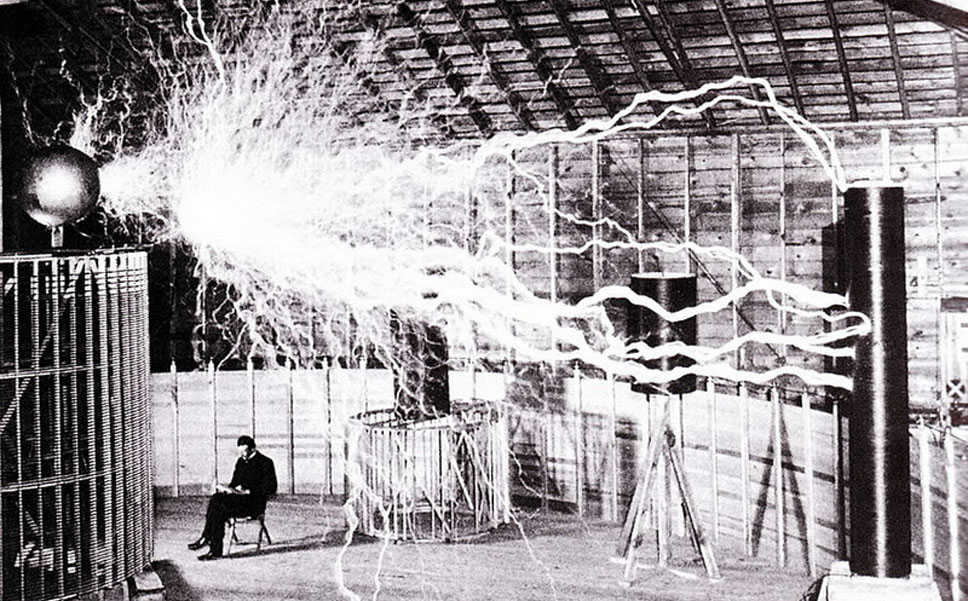
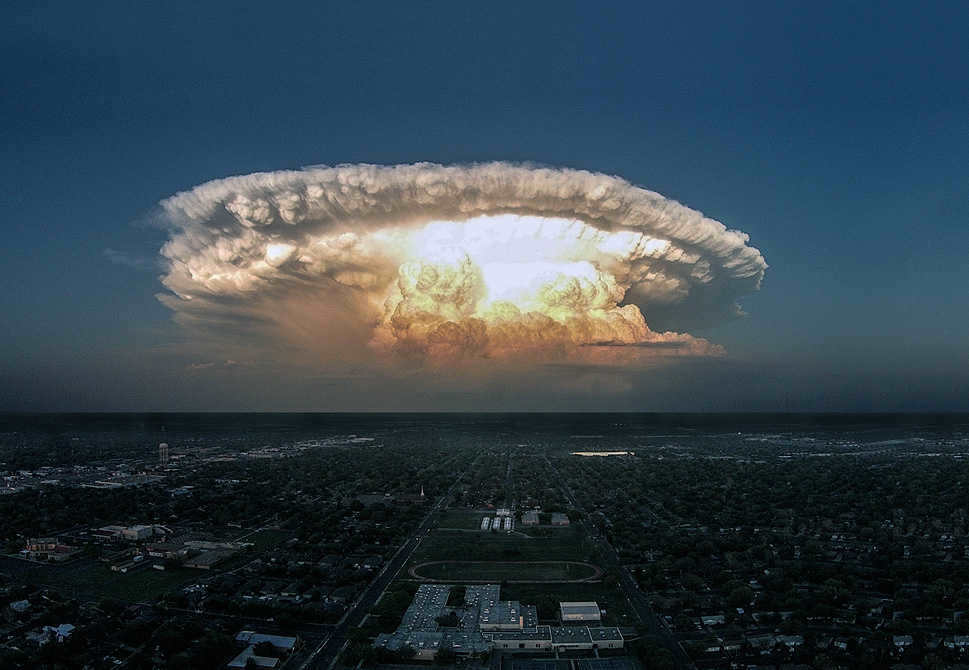
One of the most extraordinary explanations for the Tunguska event suggests that it was caused by the destruction of a spacecraft of extraterrestrial origin. Advocates of this theory point out that the absence of direct evidence of a natural origin for the fallen object could be explained by its alien nature. However, in the case of an extraterrestrial ship, there would also be a lack of such evidence. Any crash of a large technological object would inevitably result in the presence of numerous small debris and fragments. As of now, no such evidence has been discovered.
